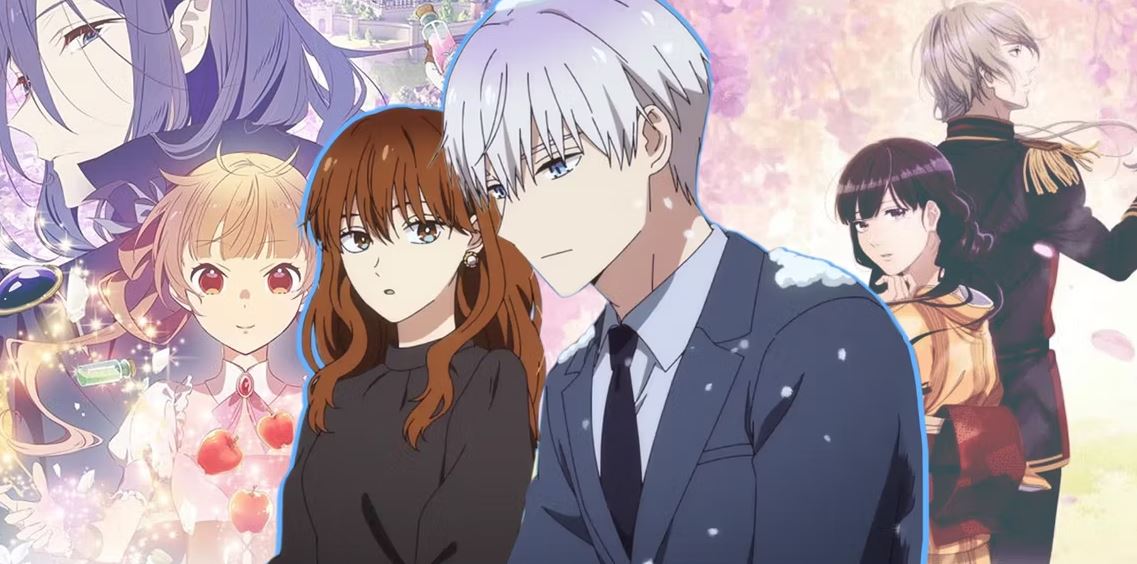Tropes are the heart of romance anime, shaping the narrative and meeting fan expectations. Whether it’s the brave knight or the cheerful “golden retriever” boyfriend, these character traits create familiarity. Likewise, narrative moments like near-kisses and misunderstandings keep viewers hooked. The enduring appeal of romance tropes stretches back to the ’80s and ’90s, proving their lasting charm.
Romantic setups such as pretend relationships and love triangles remain staples in modern romance anime. Though these concepts aren’t new, creative storytelling techniques breathe new life into them. Modern anime takes familiar patterns and makes them feel refreshing while retaining their comforting familiarity. This balance of old and new fuels the genre’s ongoing popularity.
Shifting Character Dynamics
Contemporary romance anime has also refined certain character archetypes. The kuudere love interest — calm and composed yet secretly warm — is now as popular as the classic tsundere, known for their hot-and-cold personality. This shift introduces more emotional depth and variety in romantic pairings. Evolving character dynamics make modern romance anime more engaging and emotionally layered.
Tropes may not have changed drastically over time, but modern execution has elevated them. The mix of tradition and innovation ensures romance anime remains both nostalgic and fresh. This ongoing evolution keeps audiences invested while paying homage to the genre’s roots.
10. Albert Hawke Epitomizes the Kuudere Archetype in “The Saint’s Magic Power Is Omnipotent”

Within the narrative of “The Saint’s Magic Power Is Omnipotent,” Sir Albert Hawke stands as a distinguished knight and a leader, earning the moniker of the Ice Knight not just for his prowess in ice magic but also for his notably stoic demeanor.
His reserved nature is such that any display of emotion on his part is seen as nothing short of astonishing by his peers.
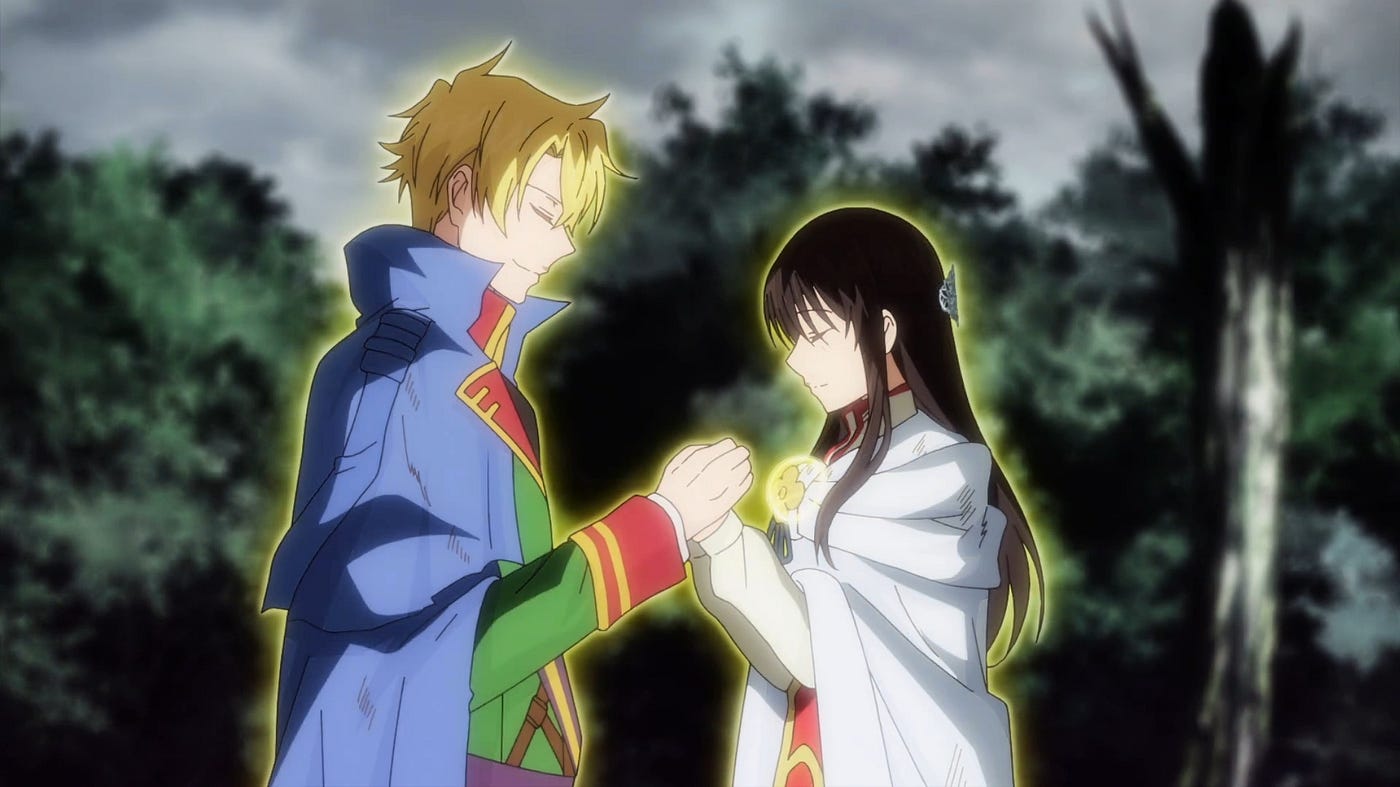
Characterized by a cool and distant exterior that belies a deep warmth hidden from the world, a kuudere like Hawke is challenging to get close to.
Yet, Sei, with her kindness, intelligence, and exceptional potion-making skills, manages to draw out a softer side of Albert Hawke, demonstrating his respect and affection towards her. This dynamic showcases how he gradually opens up, hinting at the depth of character beneath his icy facade.
9. Yor and Loid’s Convenient Marraige in “Spy x Family”

In “Spy x Family,” Loid Forger and Yor Briar navigate a unique set of circumstances that brings them together. Loid, needing a wife to complete the illusion of a stable family for his daughter Anya’s admission to a prestigious school, and Yor, seeking to dispel suspicions about her single status, find themselves in a mutually beneficial arrangement.
Anya’s suggestion to formalize their relationship through marriage finds an unexpectedly willing participant in Loid, despite his internal assertions of detachment.

As they begin their cohabitation and joint upbringing Anya, Loid, and Yor maintain a courteous yet distant rapport.
However, their shared living space gradually breaks down the barriers between them, revealing an undeniable mutual attraction and growing fondness that seems to elude only their own awareness.
Spy x Family is an action-comedy anime that first aired in April 2022, adapting the manga series by Tatsuya Endo. Produced by Wit Studio and CloverWorks, the story follows Twilight, a highly skilled spy tasked with preventing a war between the rival nations of Westalis and Ostania.

To accomplish this, he must create a fake family and infiltrate an elite school. However, his carefully crafted plan becomes complicated when his adopted daughter, Anya, turns out to be a telepath and his pretend wife, Yor, is a professional assassin.
Twilight assumes the identity of Loid Forger, a psychiatrist living in Ostania, to execute his mission known as Operation Strix. His goal is to get close to Donovan Desmond, a powerful political figure, by enrolling Anya in Eden Academy, where Donovan’s son is a student.
Loid adopts Anya from an orphanage, unaware that she can read minds. To complete the family setup, he marries Yor Briar, a kind but socially awkward woman who is secretly an assassin known as the Thorn Princess. Despite their hidden agendas, they form a bond while trying to maintain their cover.

Anya quickly becomes the emotional center of the story. Her ability to read minds allows her to sense the true thoughts and intentions of her parents, even though they try to hide their secrets from each other. Anya’s playful and mischievous personality brings humor and heart to the narrative.
She views her parents as heroes and genuinely wants them to succeed, which motivates her to perform well at Eden Academy despite her academic struggles. Her attempts to gain favor with Donovan’s son, Damian Desmond, create both comedic and heartfelt moments.
Loid’s character is defined by his calculated and strategic nature. As Twilight, he is composed, efficient, and highly skilled in combat, espionage, and psychological manipulation. However, as Loid Forger, he finds himself navigating the unexpected challenges of fatherhood and marriage.
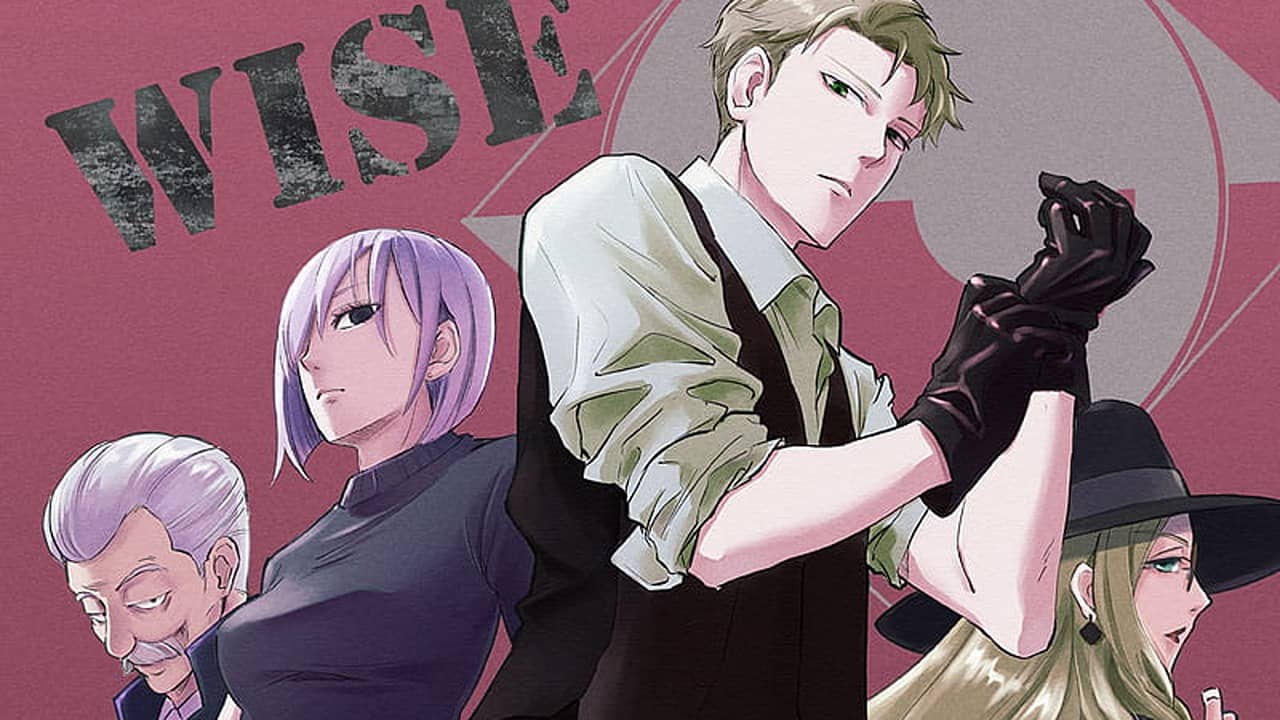
His growing attachment to Anya and Yor conflicts with his initial perception of them as tools for his mission. Loid’s subtle emotional growth is reflected in his increasing willingness to protect and care for his family beyond the requirements of Operation Strix.
Yor’s dual life as an assassin contrasts with her gentle and nurturing demeanor at home. While she is ruthless and efficient in her work as the Thorn Princess, she is awkward and shy in social situations. Her deep desire to protect her family and her growing affection for Loid and Anya make her a complex and sympathetic character. Yor’s internal conflict between her professional life and her role as a wife and mother adds emotional depth to the story.
The dynamic between Loid, Yor, and Anya forms the emotional core of the series. Their interactions are marked by a mix of comedic misunderstandings and heartfelt moments. Anya’s awareness of her parents’ secrets, combined with her childlike innocence, creates humorous tension.
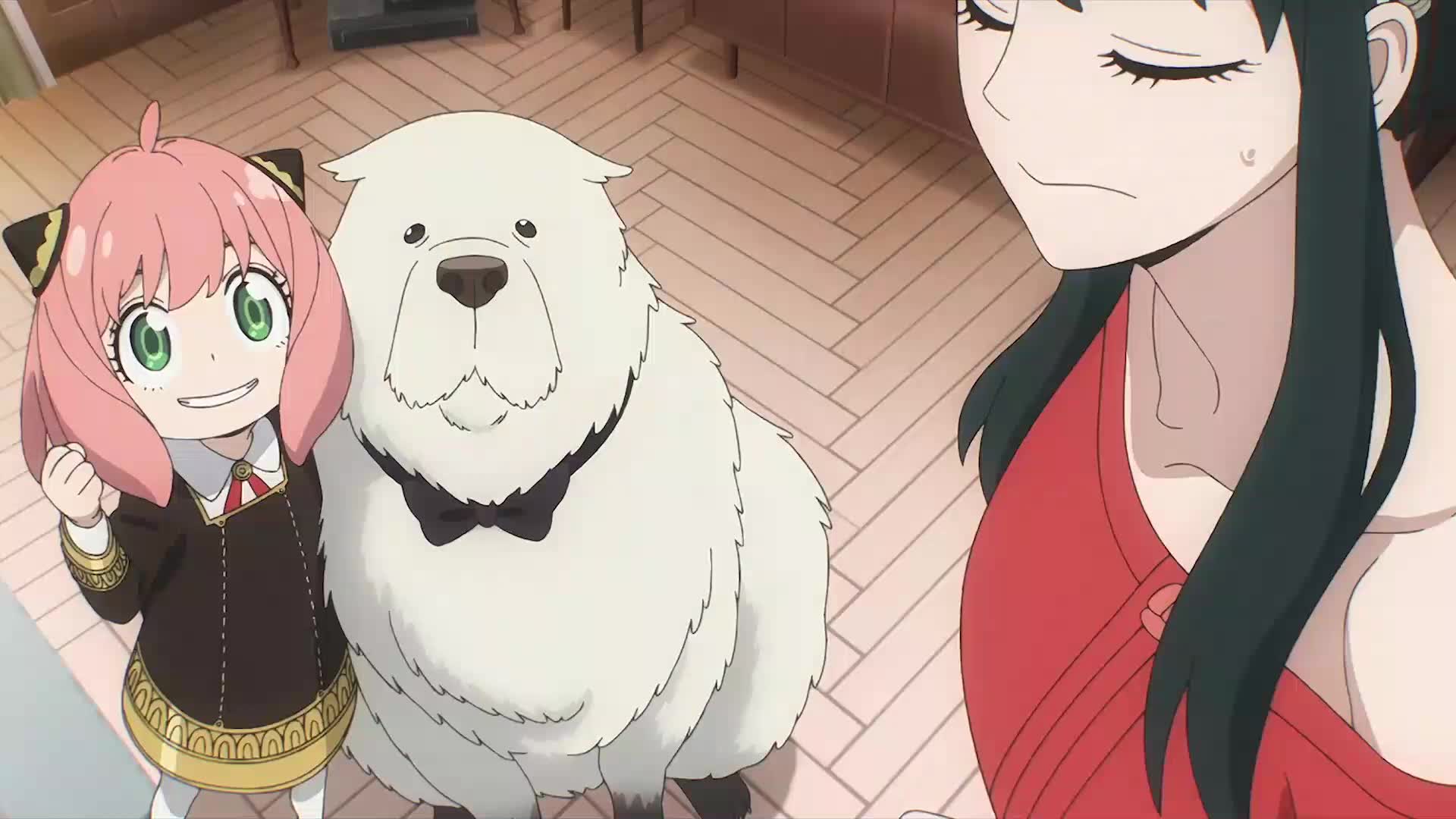
Meanwhile, Loid and Yor’s growing trust and mutual respect lay the foundation for a relationship built on genuine affection rather than convenience. Their evolving dynamic reflects the theme of finding strength and belonging within a chosen family.
The supporting cast adds complexity to the story’s political and emotional layers. Damian Desmond, Anya’s classmate and the target of Operation Strix, struggles with his own need for parental approval. Becky Blackbell, Anya’s best friend, provides comic relief and emotional support.
Yuri Briar, Yor’s brother and a secret government agent, harbors deep suspicion toward Loid, adding tension to the family dynamic. Franky Franklin, Loid’s informant and friend, offers comedic relief and strategic assistance in Loid’s missions.

The animation style reflects the blend of action and comedy. Wit Studio and CloverWorks maintain high production quality, with fluid fight choreography and expressive character designs. The color palette shifts between the warmer tones of family life and the cooler, darker tones of espionage and assassination, reinforcing the contrast between personal and professional lives. Character expressions, especially Anya’s exaggerated reactions, enhance the comedic tone without detracting from emotional depth.
The soundtrack, composed by (K)NoW_NAME, enhances both the action and emotional moments. The opening theme, “Mixed Nuts” by Official HIGE DANDism, captures the series’ playful yet suspenseful atmosphere. The ending theme, “Kigeki” by Gen Hoshino, contrasts with a soft, reflective tone that highlights the emotional core of the story. The background music effectively underscores the tension of espionage scenes and the warmth of domestic interactions.
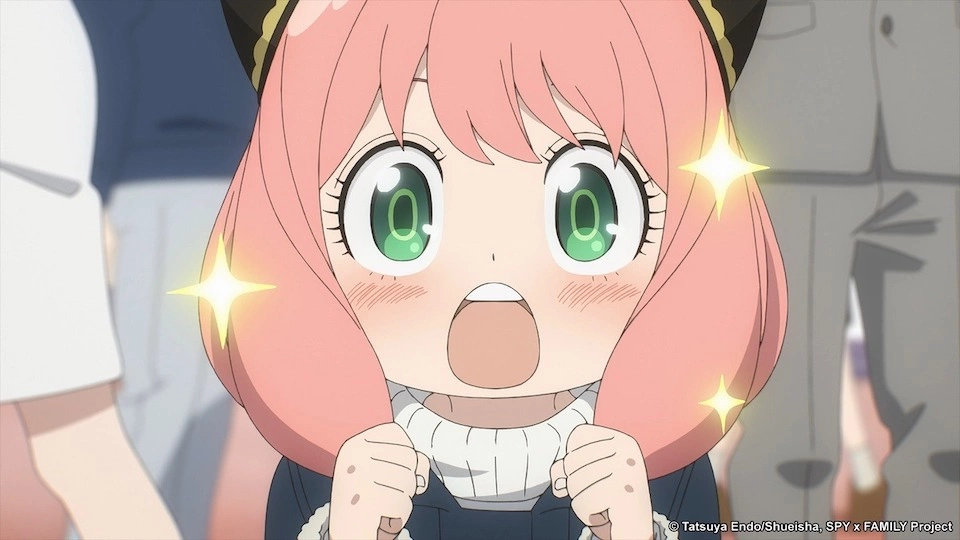
Voice acting contributes significantly to the series’ emotional tone. Takuya Eguchi’s performance as Loid balances the character’s professional detachment with growing warmth toward his family. Atsumi Tanezaki’s portrayal of Anya captures the character’s childlike curiosity and emotional vulnerability.
Saori Hayami’s performance as Yor reflects the character’s duality — soft-spoken and awkward at home but lethal and confident in her professional life. The supporting cast delivers equally nuanced performances, adding depth to the interpersonal relationships.
The narrative explores themes of identity, trust, and emotional connection. Loid, Yor, and Anya each conceal their true identities while forming genuine bonds with one another. The conflict between professional duty and personal attachment drives the emotional tension of the story.

Anya’s telepathic ability serves as a narrative device to reveal hidden thoughts and intentions, reinforcing the theme of emotional transparency and acceptance.
Character development is a key strength of the series. Loid’s transition from a detached and calculating spy to a protective and emotionally engaged father reflects his growing emotional attachment to his family.
Yor’s shift from a solitary assassin to a caring and protective mother figure underscores her emotional vulnerability. Anya’s efforts to navigate the social challenges of Eden Academy and gain Damian’s friendship highlight her emotional resilience and desire for connection.
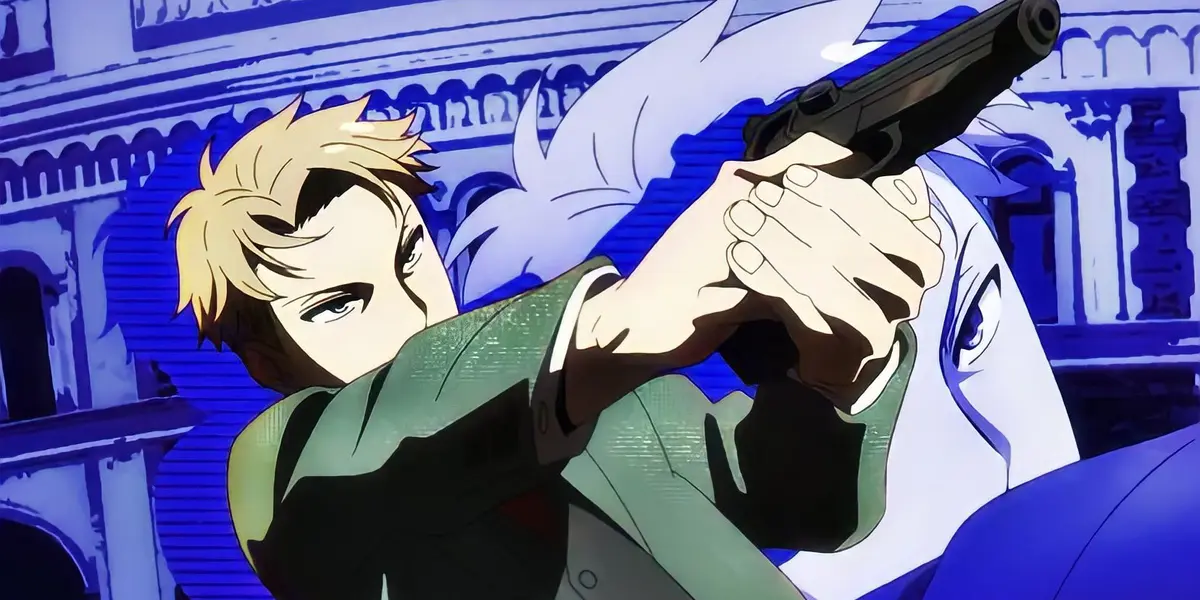
The story’s pacing balances action, comedy, and emotional development. High-stakes espionage missions create tension and excitement, while domestic moments provide emotional grounding and comedic relief. The alternating focus between professional conflict and personal growth maintains narrative momentum without feeling rushed or disjointed. The series’ ability to balance these elements reflects its strong writing and character-driven focus.
Spy x Family stands out for its creative premise, balanced storytelling, and emotionally resonant characters. The contrast between espionage and domestic life creates a compelling narrative framework that allows for both action-packed sequences and heartfelt moments.
The emotional core of the story lies in the evolving bond between Loid, Yor, and Anya, highlighting the importance of trust, acceptance, and chosen family. Supported by high-quality animation, a memorable soundtrack, and strong voice performances, the series delivers an engaging and emotionally satisfying experience.
8. Raeliana’s Cunning Escape: A Blackmail-Fueled Engagement in “Why Raeliana Ended Up at the Duke’s Mansion”
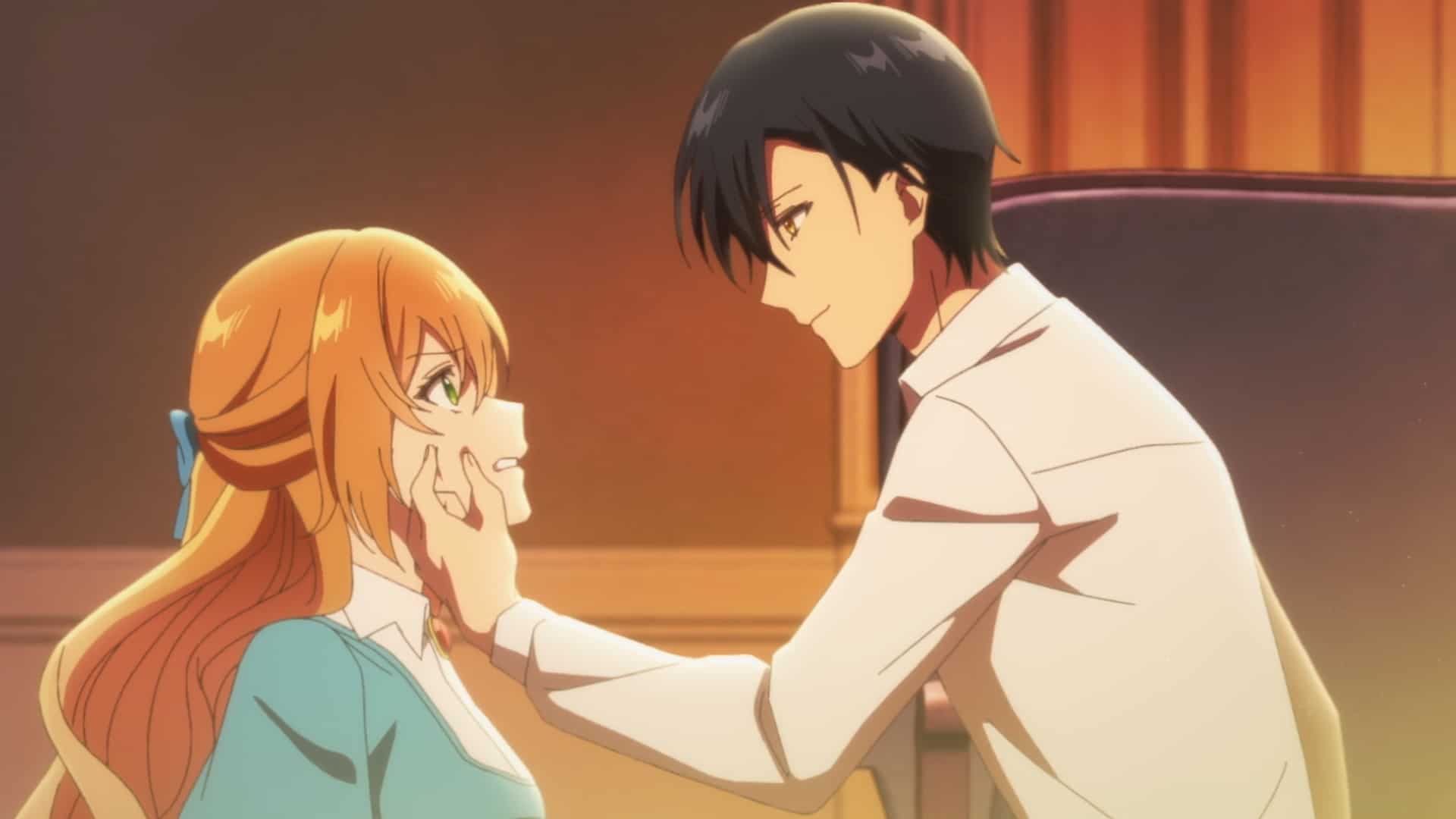
In “Why Raeliana Ended Up at the Duke’s Mansion,” Raeliana finds herself desperately seeking to evade the advances of Francis Brooks, a suitor with malicious intent who is after her wealth.
With her back against the wall, she opts for a bold strategy: blackmail. Her target? Duke Noah Wynknight, a man far from ordinary, whose reaction to her scheme is neither of anger nor threat but rather amusement and curiosity.
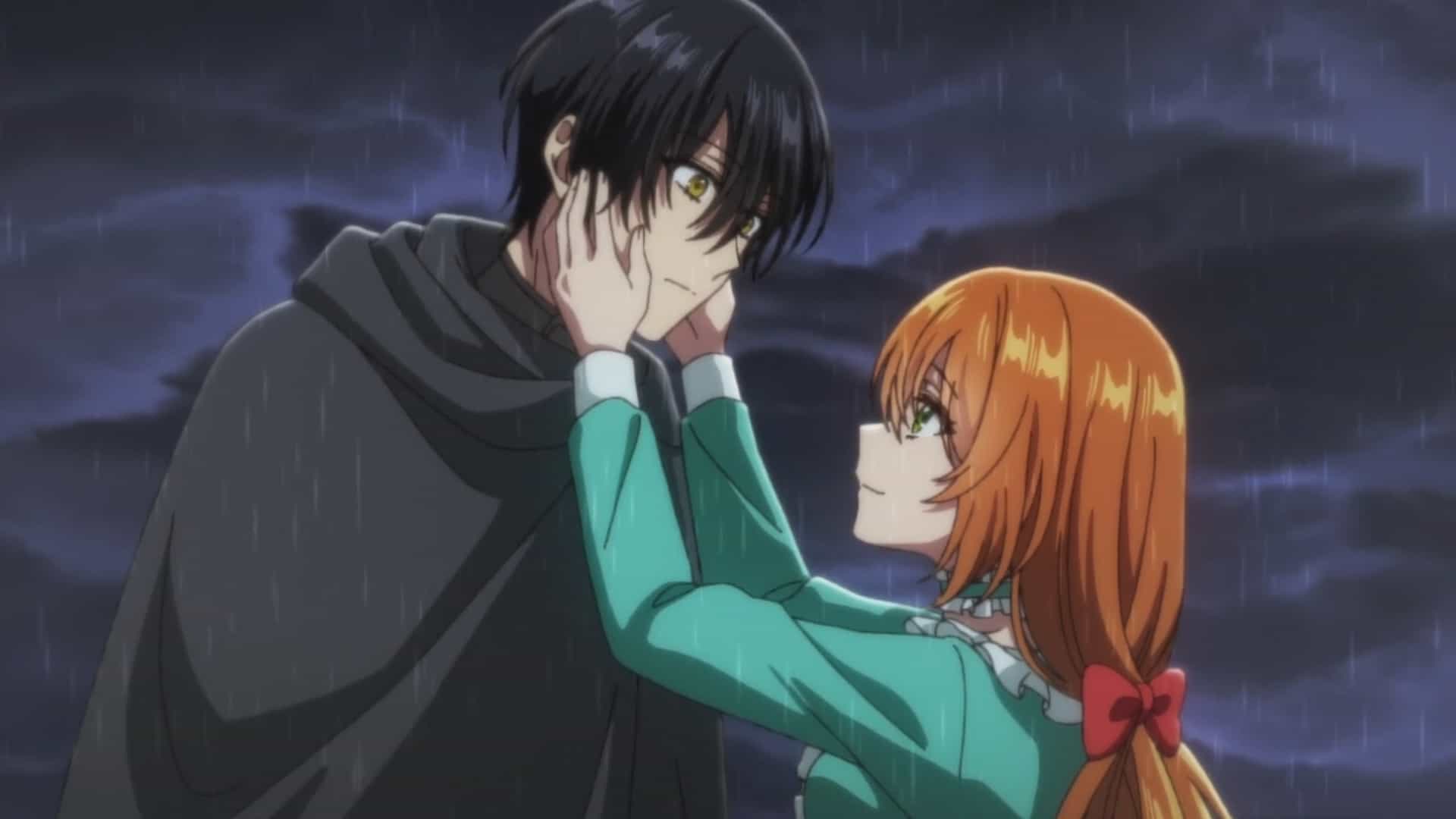
Duke Wynknight finds himself sufficiently charmed and intrigued by Raeliana’s audacity to propose a fake engagement, a common trope in romantic narratives that often comes with a presumed expiration date.
Raeliana, under the impression she’s merely a temporary fixture in this arrangement, is unaware of the Duke’s hidden agenda and the unexpected turns their faux relationship might take.
“Why Raeliana Ended Up at the Duke’s Mansion” is a romantic fantasy anime based on the popular Korean web novel by Milcha. The anime aired in April 2023, adapting the story of Eunha Park, who is reincarnated as Raeliana McMillan in a world resembling a novel. Knowing that Raeliana’s fate is to be murdered by her fiancé, she schemes to alter her destiny by seeking help from Duke Noah Wynknight, a powerful figure with his own secrets.
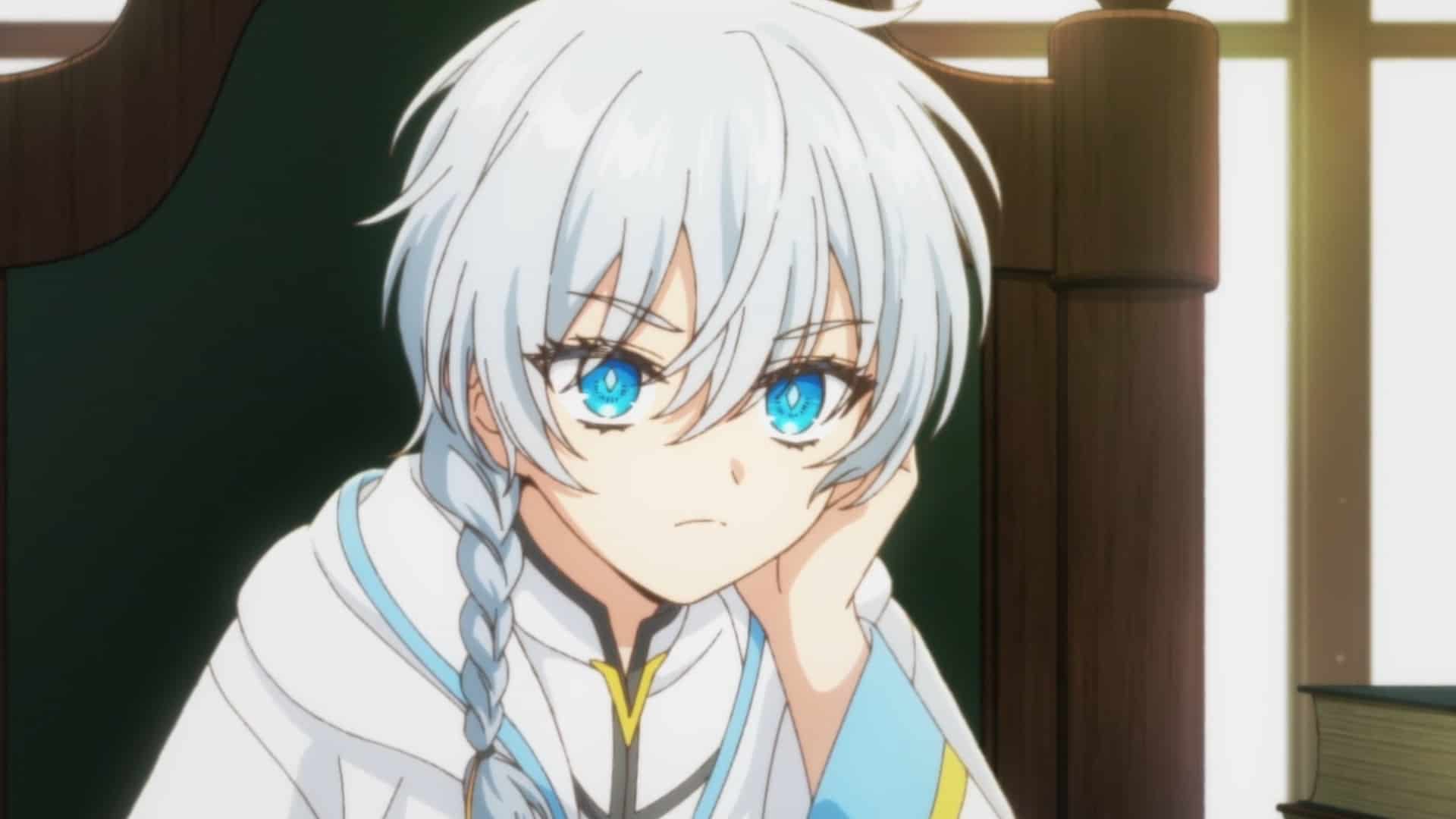
Raeliana’s journey begins when she regains memories of her previous life and realizes her tragic future as a supporting character doomed to die. Determined to avoid this fate, she approaches Noah with a proposition: to enter into a fake engagement. In exchange, she offers him valuable information and influence. Noah, intrigued by Raeliana’s boldness and foresight, agrees to the deal, setting the stage for a complex relationship built on deception and mutual benefit.
The relationship between Raeliana and Noah is the core of the anime’s emotional weight. Raeliana is sharp, quick-witted, and resilient, using her knowledge of the novel’s events to outmaneuver political threats and social rivals.
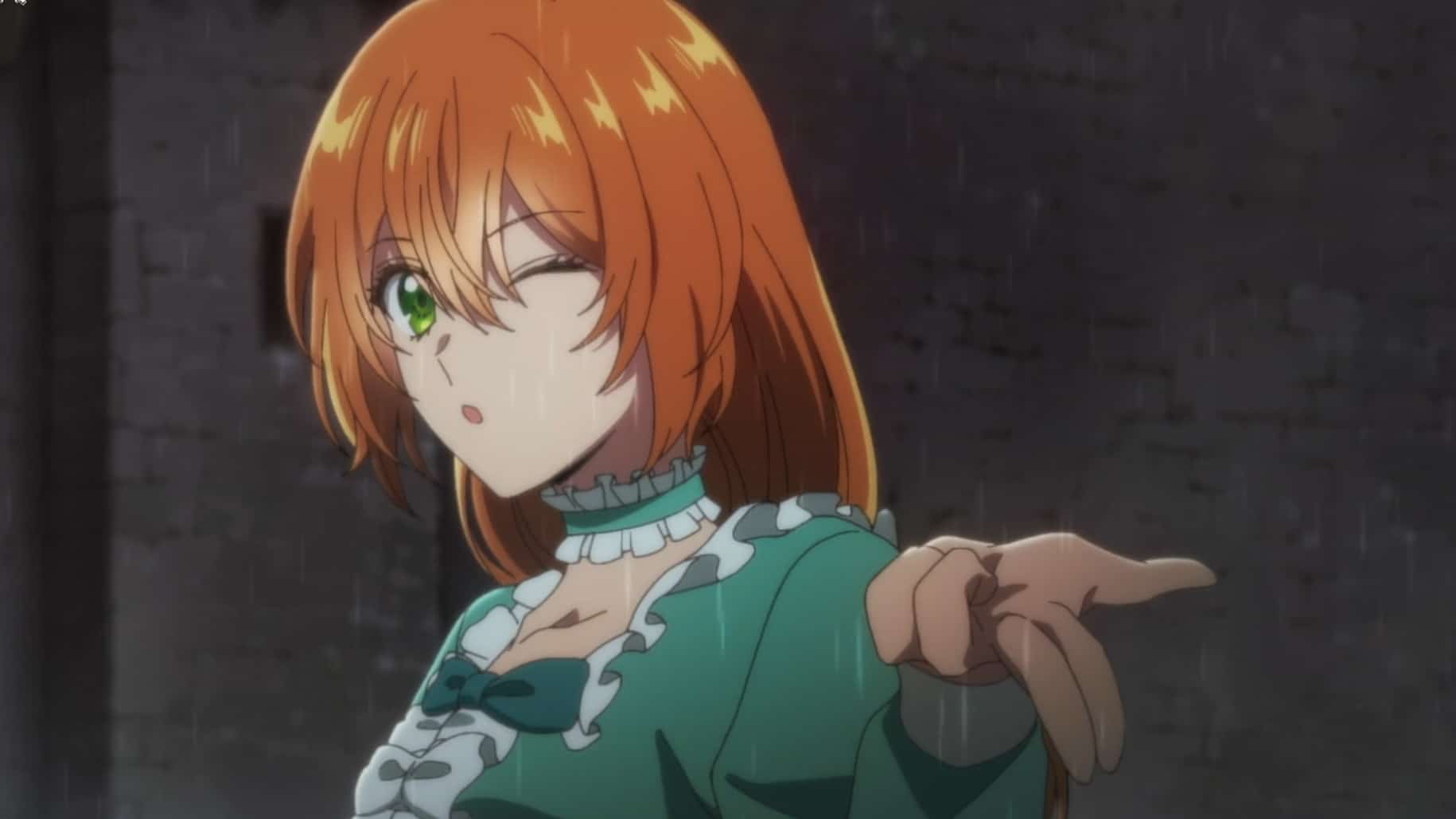
Noah, on the other hand, is charming yet calculating, presenting a composed exterior while concealing his own agenda. Their growing bond transitions from strategic partnership to genuine affection, with both characters challenging each other’s emotional barriers.
Raeliana’s dynamic personality stands out among the noble class. She refuses to be a passive character, actively steering her fate through negotiation and clever manipulation. Noah’s gradual shift from cold calculation to emotional vulnerability reflects the depth of their evolving connection.
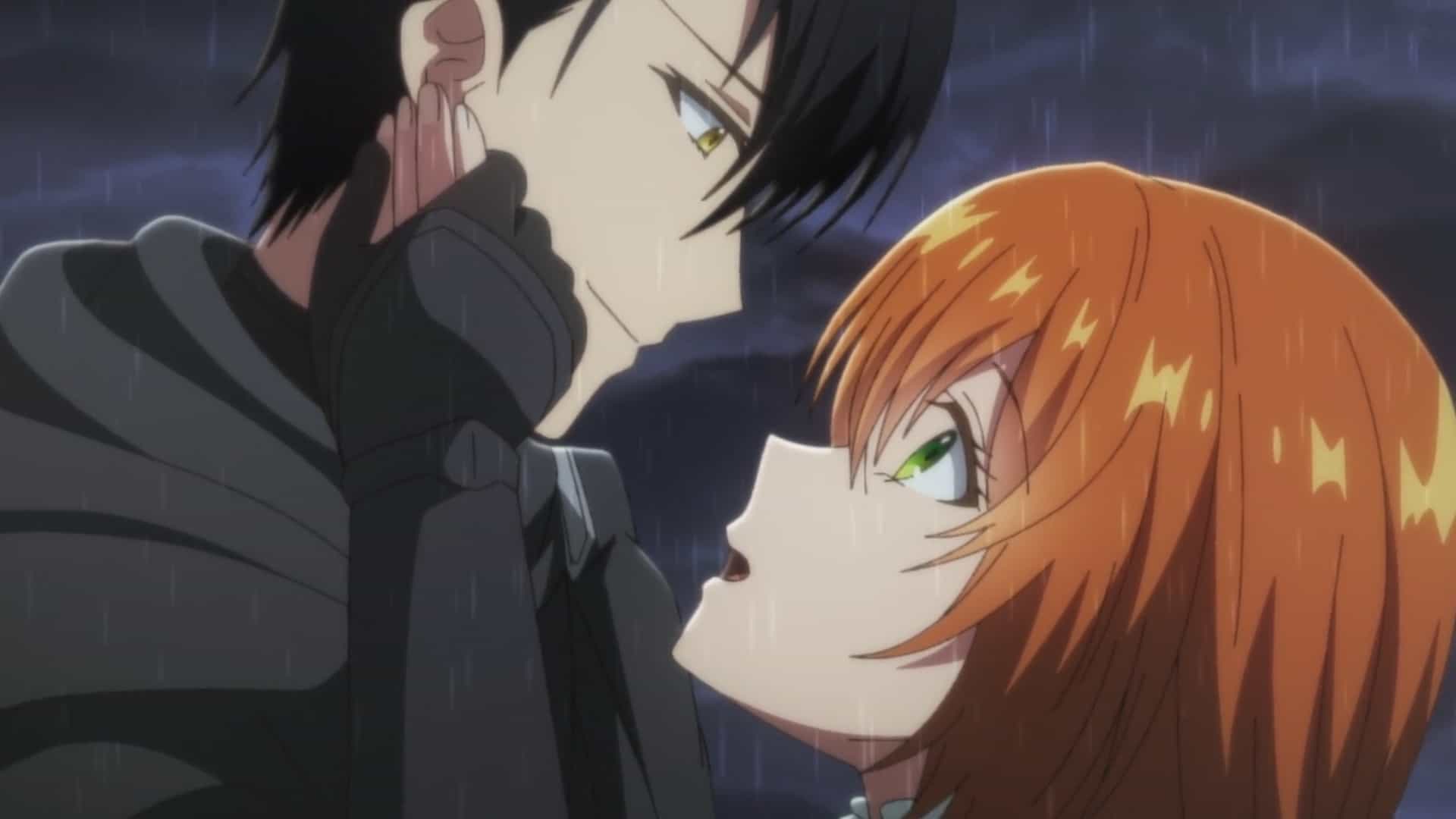
His playful teasing and underlying protectiveness toward Raeliana reveal a side of him that only she seems to bring out.
The anime’s setting combines the elegance of a European-inspired nobility scene with subtle magical undertones. The McMillan estate and the Duke’s mansion are depicted with grand architectural designs and refined interiors, highlighting the characters’ aristocratic status. The attention to detail in character attire and formal events enhances the sense of social hierarchy and political tension.
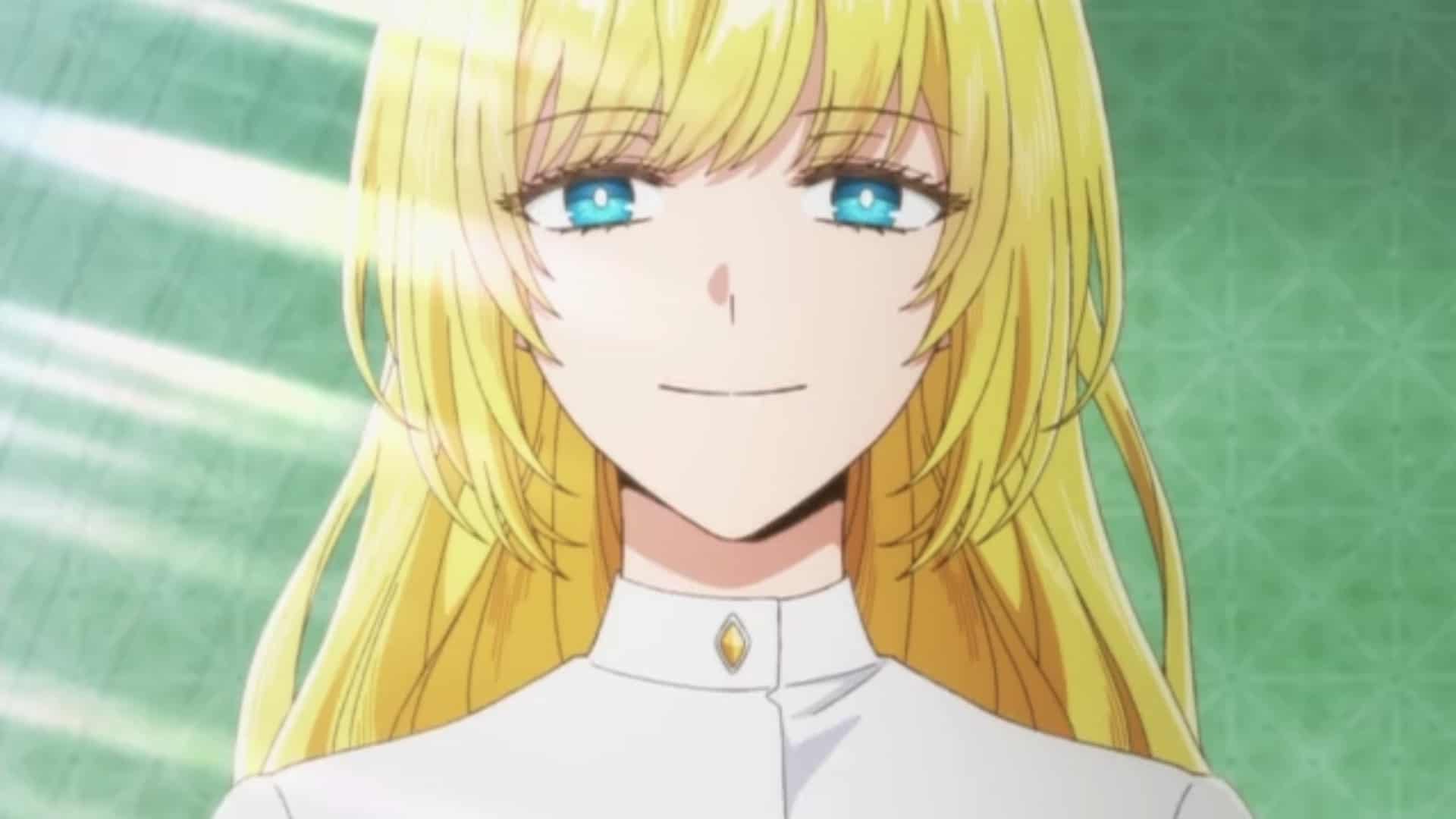
The supporting cast adds complexity to the narrative. Vivian Shamal, Noah’s former fiancée, represents the cutthroat nature of aristocratic society, while Adam Taylor, Raeliana’s loyal bodyguard, reflects her growing circle of trust. The political maneuvering among the nobility creates an undercurrent of suspense, as Raeliana’s actions have far-reaching consequences beyond her personal survival.
Raeliana’s attempt to rewrite her fate is not without challenges. Her relationship with Noah invites jealousy and scrutiny from the social elite, while hidden threats from her original fiancé, Francis Brooks, linger beneath the surface. The tension between personal survival and societal expectation drives much of the anime’s dramatic weight, as Raeliana carefully balances strategic alliances with emotional vulnerability.
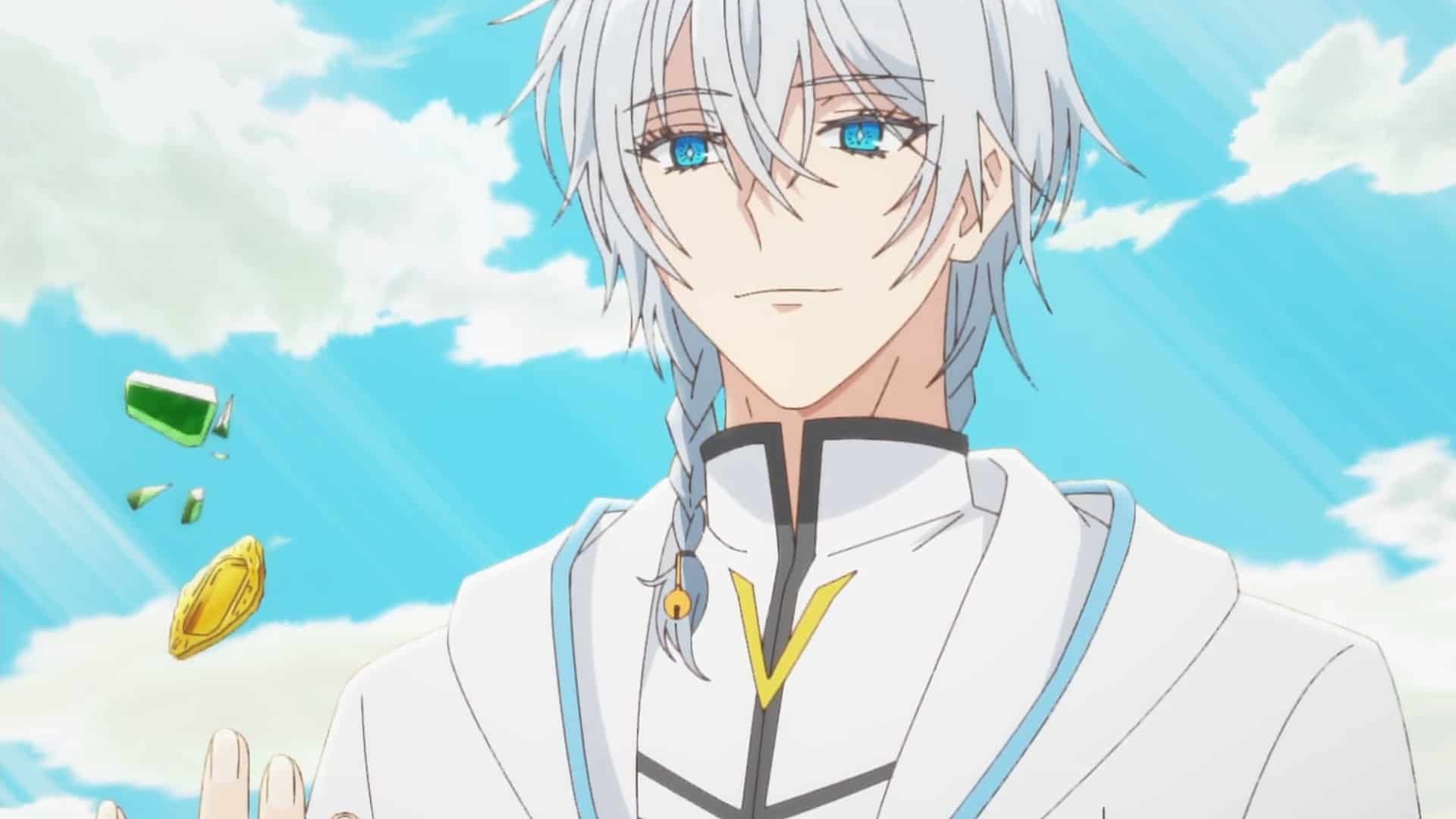
The anime’s animation, produced by Typhoon Graphics, maintains a refined and consistent visual style. Character expressions and body language are carefully detailed, enhancing the emotional undertones of key scenes. Raeliana’s confident smirks and Noah’s knowing glances contribute to the romantic tension that defines their relationship. The color palette shifts between warm tones for intimate moments and cooler shades during scenes of political tension.
Musical scoring by Keiji Inai underscores the anime’s emotional and dramatic shifts. The opening theme, “Survive” by MindaRyn, reflects Raeliana’s determination and adaptability, while the ending theme, “Always and Forever” by SERRA, carries a softer tone that mirrors the growing emotional connection between Raeliana and Noah. Background compositions highlight the elegance of noble society and the underlying tension of Raeliana’s precarious position.
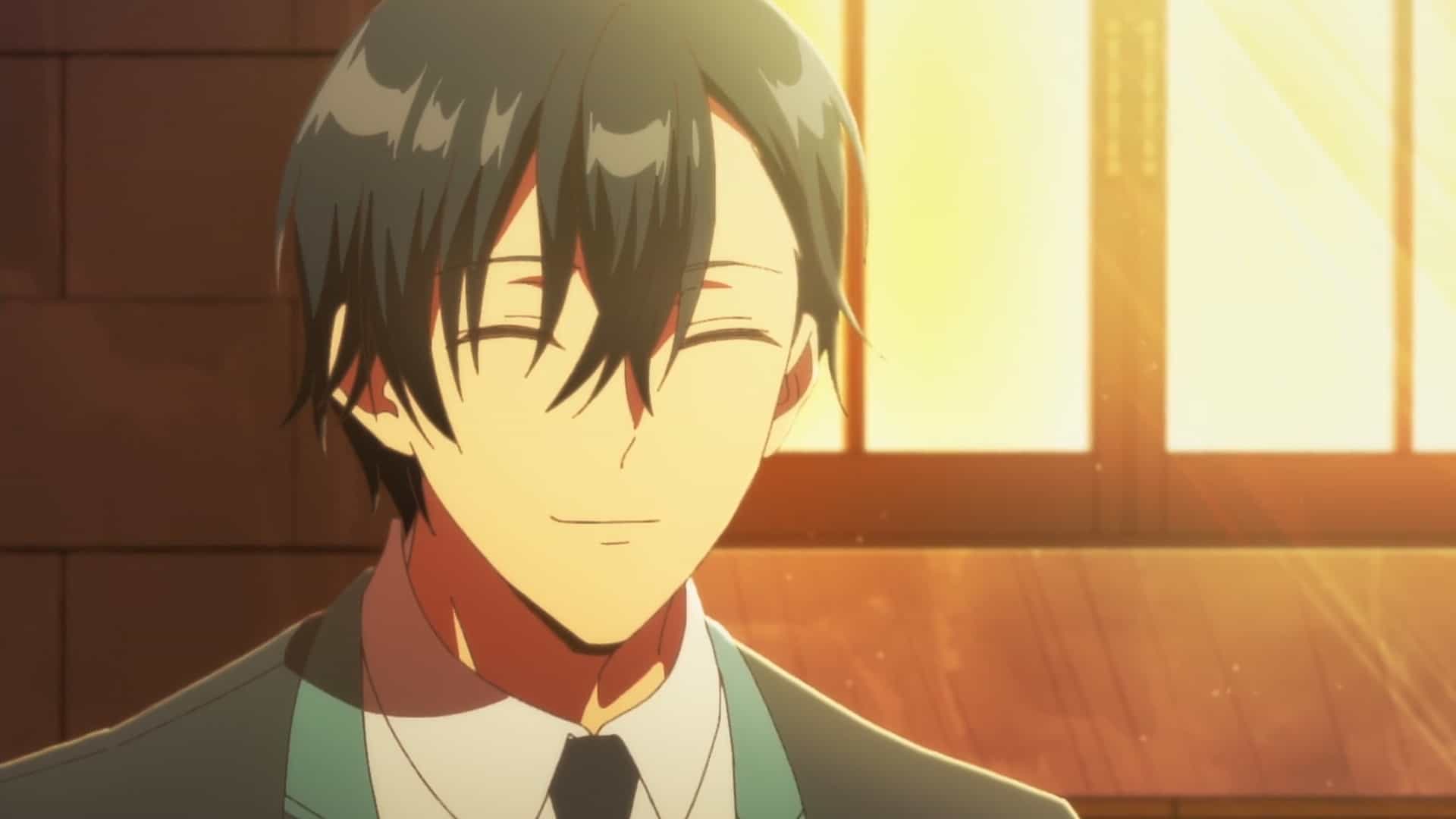
Voice acting brings depth to the characters’ personalities. Yume Miyamoto’s portrayal of Raeliana captures her balance of confidence and vulnerability, while Yuichiro Umehara’s performance as Noah delivers a mix of charm and quiet intensity. Their chemistry drives the emotional core of the anime, as the playful banter between Raeliana and Noah gradually gives way to deeper trust and romantic tension.
Themes of fate, agency, and trust are central to the anime’s narrative. Raeliana’s refusal to accept her destined death challenges the notion of predetermined outcomes, emphasizing the power of choice and strategy in shaping one’s future. Her willingness to place her trust in Noah, despite his initial aloofness, reflects her growing understanding of emotional vulnerability as a source of strength.
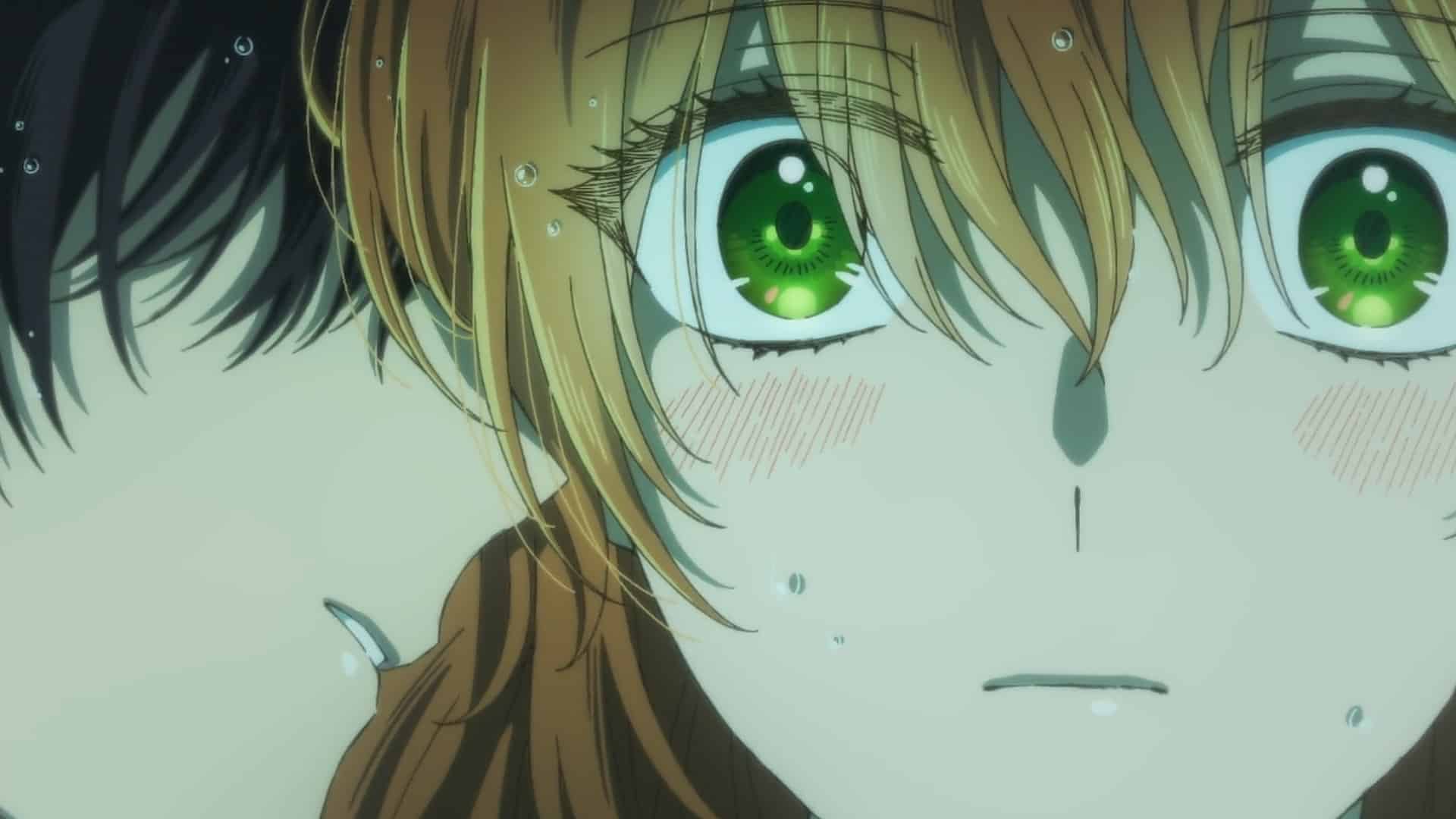
The romantic progression between Raeliana and Noah feels organic, driven by mutual respect and shared goals rather than contrived circumstances. Raeliana’s resourcefulness and Noah’s protective instincts create a dynamic of equality and partnership, reinforcing the idea that love and trust are built through action and understanding rather than fate alone.
The anime’s pacing strikes a balance between political intrigue and romantic development. Raeliana’s strategic moves within the noble court are interspersed with moments of emotional vulnerability and playful interaction with Noah. The combination of external political tension and internal emotional growth keeps the narrative engaging without feeling rushed or fragmented.
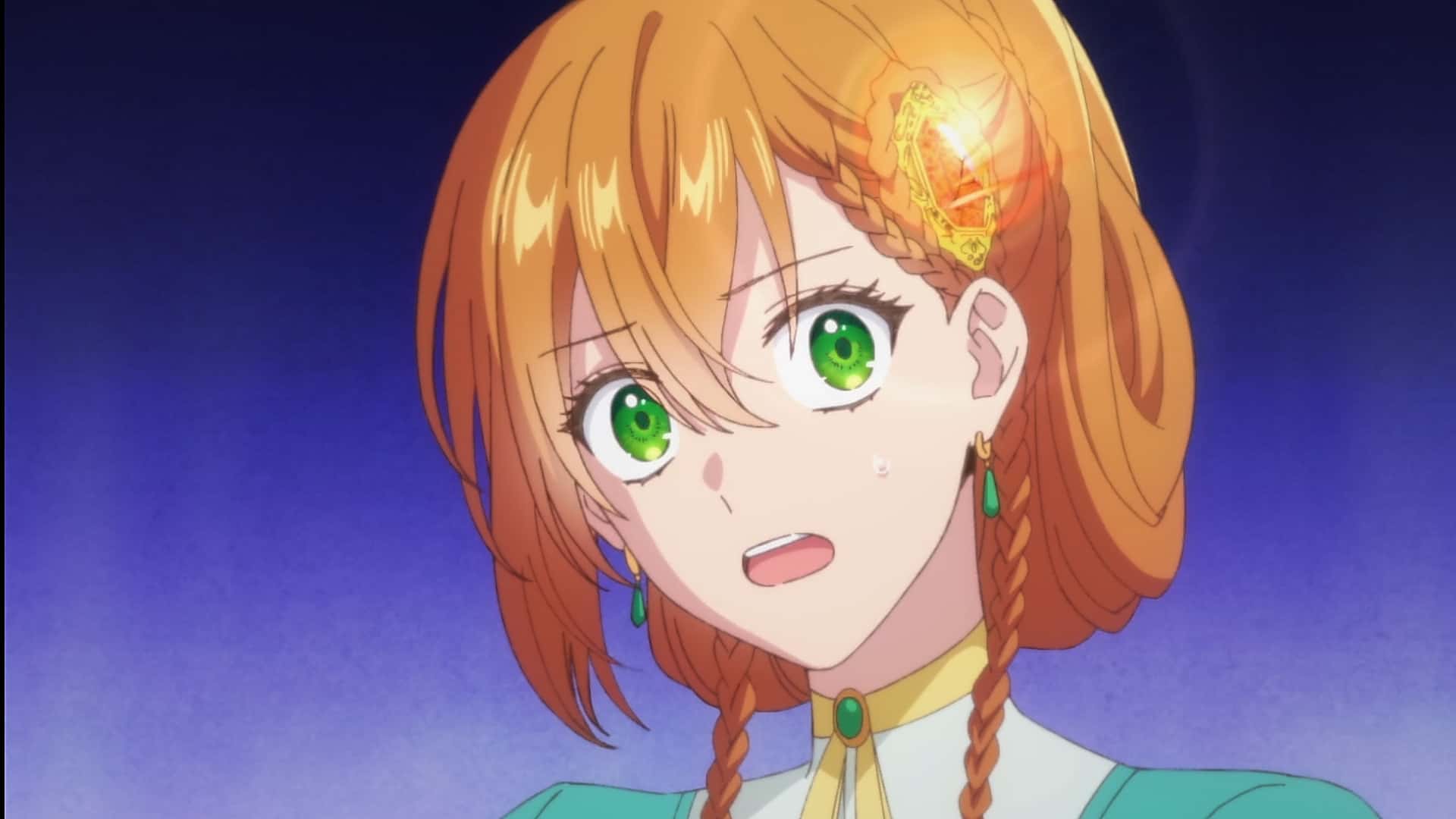
Why Raeliana Ended Up at the Duke’s Mansion stands out as a well-executed blend of romance, political intrigue, and character growth. Raeliana’s sharp intelligence and emotional resilience set her apart from typical romantic heroines, while Noah’s gradual shift from detached strategist to protective partner creates a satisfying emotional arc.
The anime’s attention to detail in setting, character expression, and narrative progression enhances its overall appeal. Its exploration of fate versus agency, coupled with a balanced romantic dynamic, creates a layered and engaging story. Why Raeliana Ended Up at the Duke’s Mansion offers a refreshing take on the reincarnation and noble romance genres, delivering a satisfying blend of strategic conflict and heartfelt connection.
7. Lu Shouxue’s Tsundere Charm in “Raven of the Inner Palace”
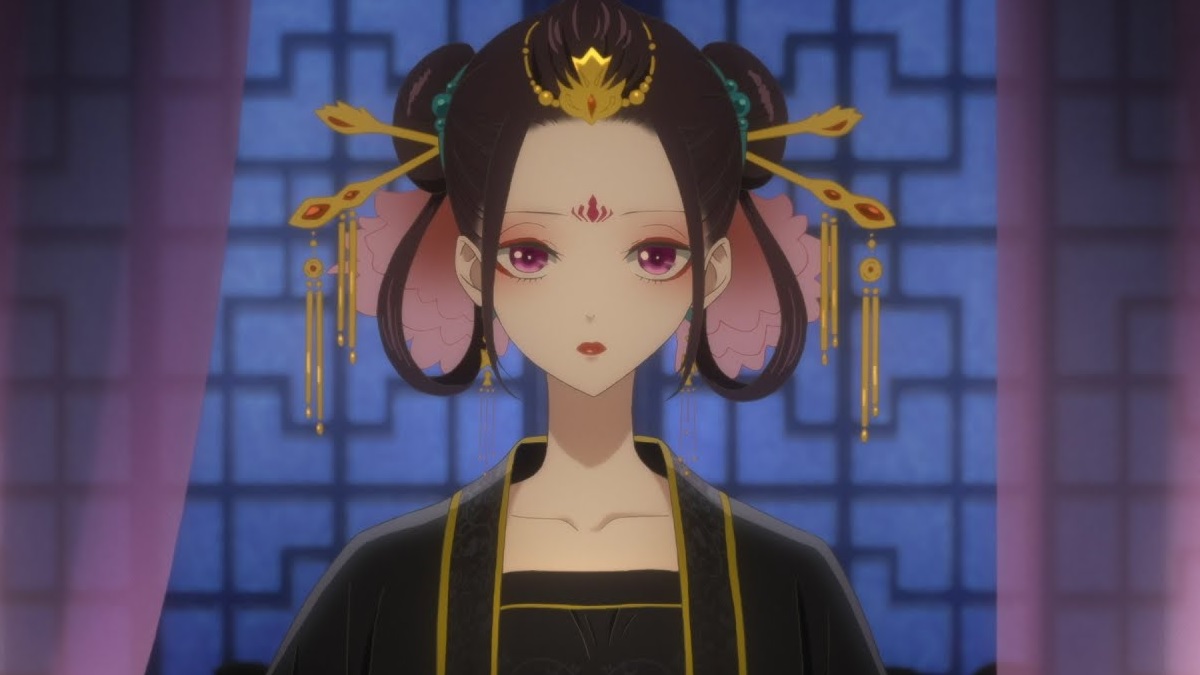
In “Raven of the Inner Palace,” Lu Shouxue epitomizes the tsundere archetype, albeit with a refreshing twist. Initially unfamiliar with forming close bonds, she reacts stiffly to the Emperor’s attempts at friendship. The Emperor, with his undeniable charm, seeks to penetrate her defensive exterior, only to be met with her curt and seemingly indifferent responses.
Tsundere characters, known for their frosty demeanor that conceals a warmer, softer interior, have long been a staple in romantic narratives, often portrayed as female leads who gradually reveal their tender side to the male protagonist.
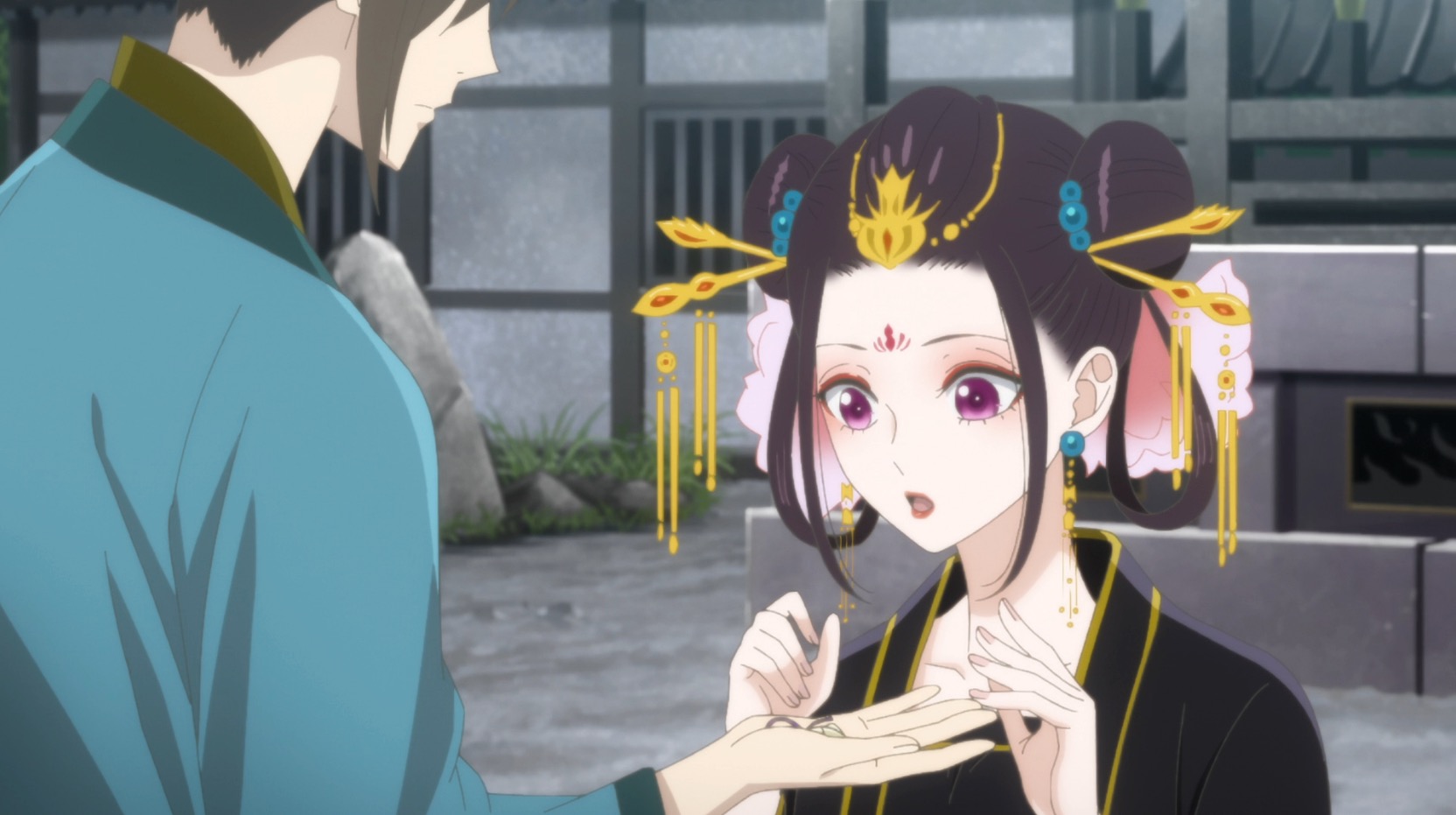
However, the trend has shifted, with male tsundere becoming more prevalent in recent stories. Lu Shouxue’s portrayal as a tsundere female lead, therefore, harks back to the classic portrayal, offering a nostalgic yet fresh dynamic.
Her balance between aloofness and appeal makes her character intriguing, as she navigates her complex feelings towards the Emperor’s advances, embodying the tsundere’s characteristic oscillation between coldness and affection.
6. Akane’s Clumsy Courtship in “My Love Story with Yamada-kun at Lv999”
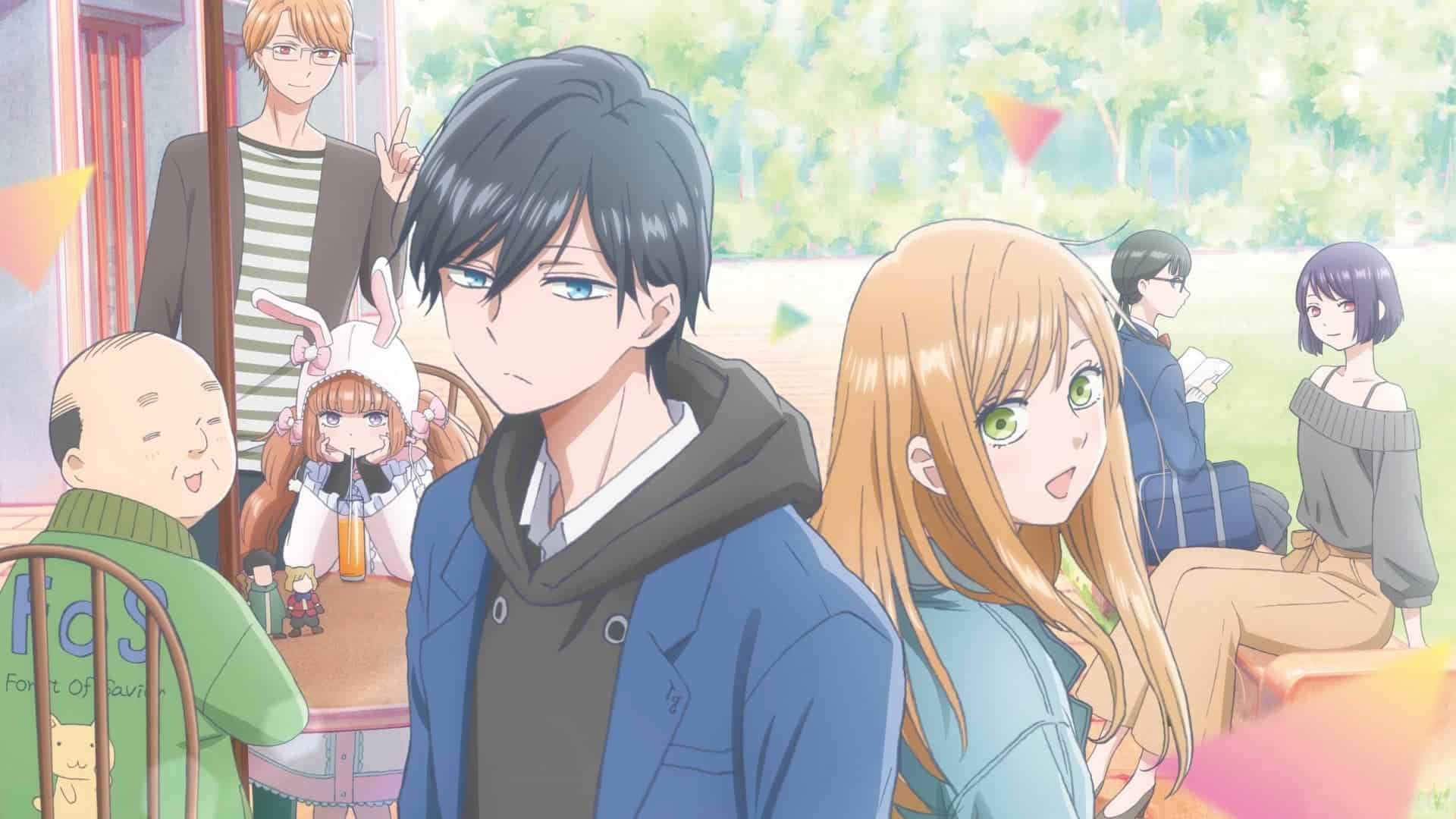
In “My Love Story with Yamada-kun at Lv999,” Akane finds herself in a series of embarrassing mishaps, embodying the bakadere trope with charm and grace. Characterized by their endearing clumsiness and often comedic misunderstandings, bakadere characters like Akane add a layer of relatability and humor to shojo narratives.
Her journey begins on a sour note, with her being abruptly dumped by her boyfriend, leading her into the path of Yamada, a skilled and attractive gamer whose cool demeanor stands in stark contrast to her own warm and bumbling personality.
Mistaking Yamada’s kuudere calmness for aloofness, Akane’s attempts to bridge their differences only result in more comical slip-ups, from tumbling out of her footwear to an unintentional drunken escapade during their first outing.
Despite the series of faux pas, Akane’s likable nature and genuine kindness shine through, painting a portrait of a young woman guiding the complexities of love with.
My Love Story with Yamada-kun at Lv999 is a romantic comedy anime that aired in April 2023, adapting the manga series by Mashiro. Produced by Madhouse, the story follows Akane Kinoshita, a college student who faces an unexpected breakup and finds solace in an online game called “Forest of Savior” (FOS).
Through this game, she meets Akito Yamada, a quiet and skilled player whose indifferent personality contrasts with her emotional vulnerability. Their connection develops through a mix of online and real-life encounters, blending romantic growth with the gaming world’s challenges.
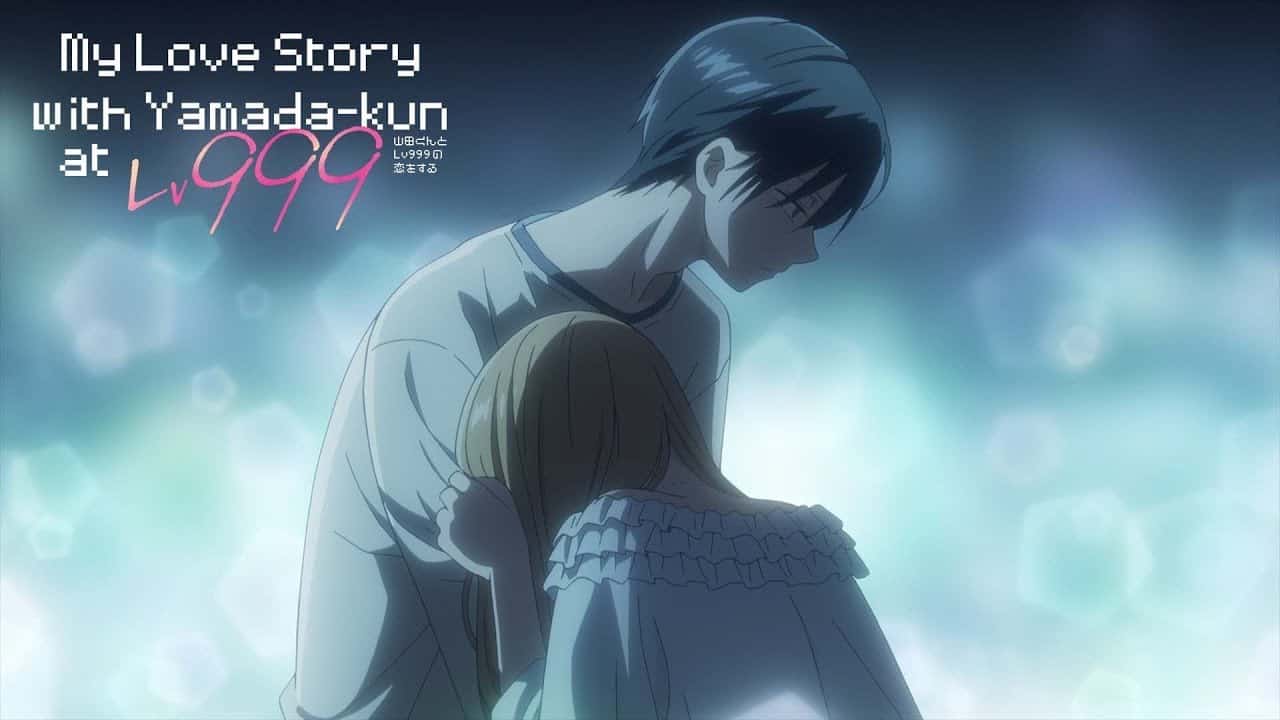
Akane Kinoshita’s story begins when her boyfriend breaks up with her after falling for another girl he met through the game. Heartbroken and frustrated, Akane logs into FOS, hoping to distract herself. There, she meets Yamada, a high-level player known for his exceptional gaming skills and aloof demeanor.
Their first meeting is awkward, as Yamada’s blunt personality clashes with Akane’s emotional state. Despite their contrasting personalities, Akane is drawn to Yamada’s calm presence and straightforward nature.
Akane’s emotional vulnerability contrasts with Yamada’s quiet and reserved nature. While Yamada initially seems uninterested in romantic relationships, his consistent presence and quiet support gradually reveal his deeper emotional layers.
Akane’s openness and warmth slowly break down Yamada’s emotional barriers, leading to moments of unexpected tenderness and growing mutual trust. Their relationship progresses naturally, with Akane learning to navigate her feelings while Yamada becomes more aware of his emotional responses.
The dynamic between Akane and Yamada is central to the anime’s emotional core. Akane’s expressive personality and emotional honesty highlight Yamada’s understated but steady support. Their interactions shift from awkward misunderstandings to quiet understanding, reflecting the gradual growth of their connection.
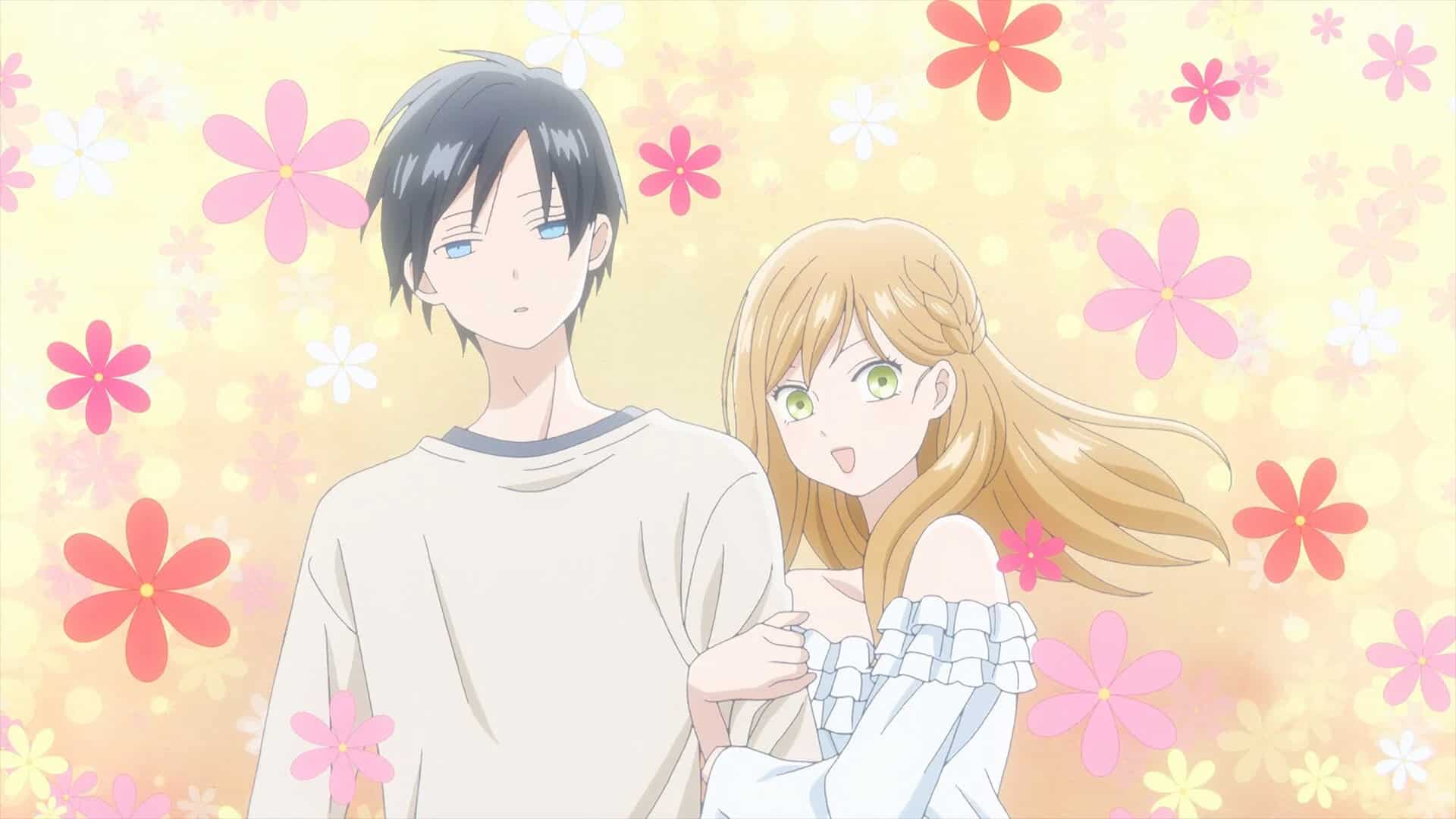
Yamada’s protective instincts emerge subtly, while Akane’s growing confidence allows her to express her feelings more openly. This slow but steady emotional development gives their relationship a sense of authenticity and depth.
The online gaming setting serves as both a backdrop and a metaphor for Akane and Yamada’s emotional journey. FOS becomes a space where they can interact more openly, free from the social constraints of real life.
The game’s cooperative mechanics require teamwork and trust, mirroring the emotional growth between Akane and Yamada. Their shared experiences in the game reinforce their emotional bond, with in-game challenges reflecting the personal challenges they face in real life.
Madhouse’s animation style enhances the emotional and comedic tones of the story. The character designs are clean and expressive, capturing Akane’s lively personality and Yamada’s composed demeanor. The color palette shifts between the vibrant hues of the game world and the softer tones of real life, reinforcing the contrast between the online and offline settings. Fluid character movements and detailed background designs create a visually appealing atmosphere that supports the narrative’s emotional depth.
The supporting cast adds complexity and humor to the story’s emotional. Eita Sasaki, Yamada’s close friend and guild leader, serves as a bridge between Yamada’s emotional distance and Akane’s openness.
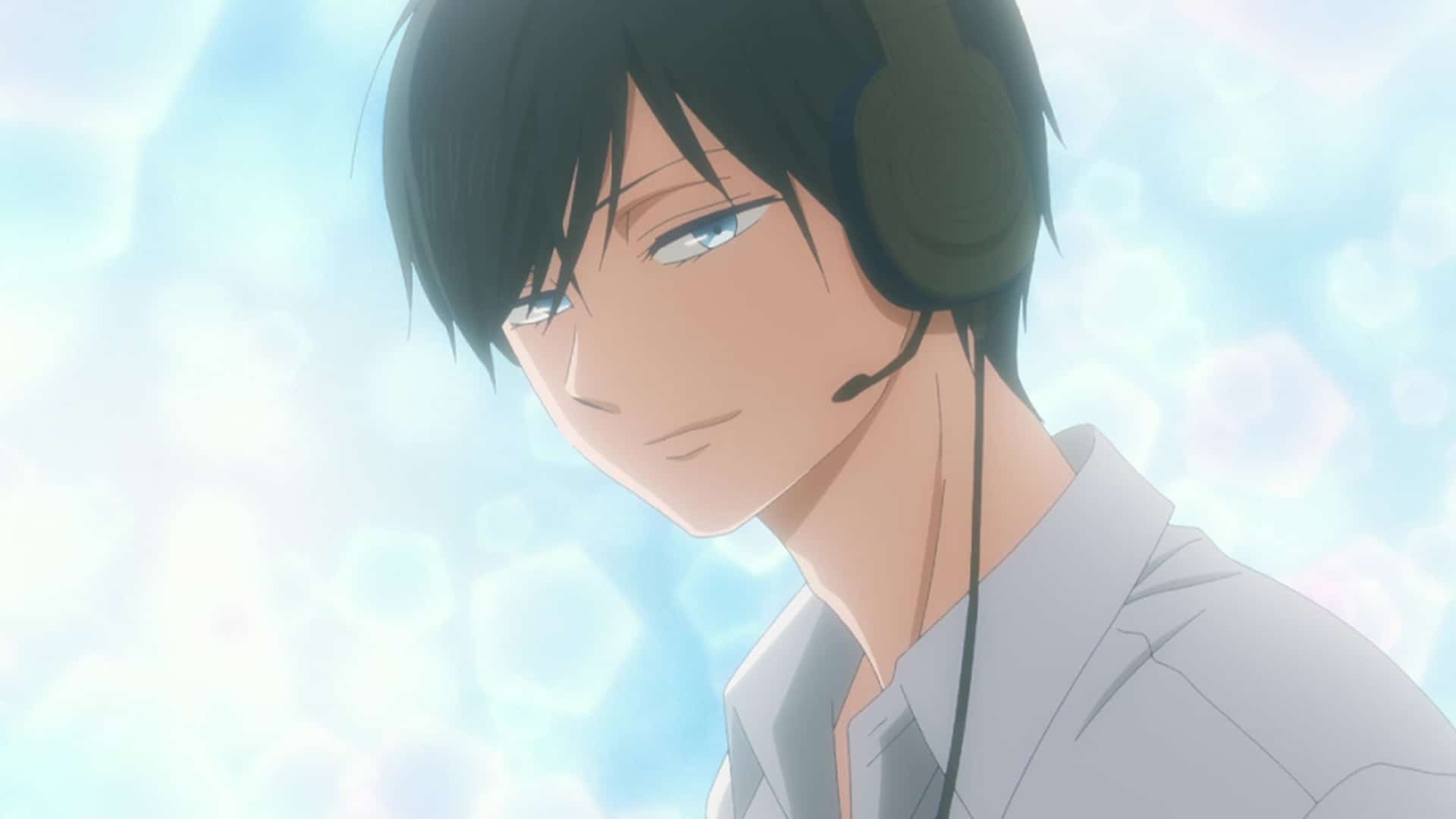
Runa Sasaki, Eita’s younger sister and fellow guild member, initially expresses jealousy toward Akane but eventually becomes a supportive friend. The interactions among the guild members create a sense of found family, providing emotional stability for both Akane and Yamada.
The anime’s soundtrack, composed by DÉ DÉ MOUSE and Mito, enhances the story’s emotional and comedic moments. The opening theme, “Gradation” by KANA-BOON, reflects the shifting emotional tones of Akane and Yamada’s relationship, balancing playful energy with introspective moments.
The ending theme, “Trick Art” by Ryujin Kiyoshi, carries a softer, reflective tone, highlighting the emotional vulnerability beneath the characters’ interactions. The background music subtly underscores the emotional shifts between comedic and heartfelt moments.
Voice acting plays a key role in conveying the characters’ emotional depth. Inori Minase’s performance as Akane captures the character’s emotional highs and lows, balancing vulnerability with playful charm. Koki Uchiyama’s portrayal of Yamada emphasizes the character’s reserved nature while hinting at his underlying emotional warmth.
The chemistry between the two leads is natural and engaging, enhancing the authenticity of their relationship. Natsuki Hanae’s performance as Eita adds humor and emotional depth, while Ai Kakuma’s portrayal of Runa captures the character’s shift from jealousy to friendship.
The story examines themes of emotional recovery, trust, and personal growth. Akane’s journey from heartbreak to emotional stability reflects the importance of emotional resilience and trust in building meaningful relationships.

Yamada’s gradual emotional awakening emphasizes the significance of vulnerability and openness in developing genuine emotional connections. The game world serves as a metaphor for emotional exploration, highlighting the balance between personal agency and emotional interdependence.
Character development is one of the anime’s strengths. Akane’s growth from emotional insecurity to self-confidence reflects her increasing emotional maturity and trust in Yamada. Yamada’s shift from emotional detachment to quiet emotional expression mirrors Akane’s influence on his emotional growth.
The supporting characters also experience meaningful growth, particularly Runa, whose transition from guarded jealousy to emotional openness reflects the broader theme of emotional connection and trust.
The pacing of the anime balances romantic development with comedic and emotional moments. The gradual progression of Akane and Yamada’s relationship allows for authentic emotional depth without feeling rushed or forced.
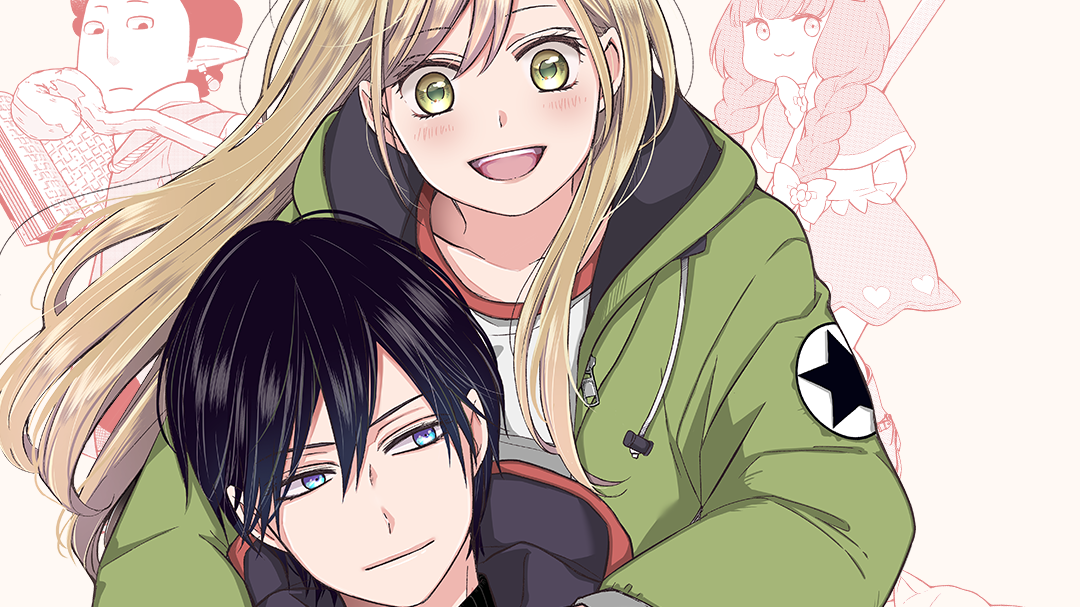
The balance between online and real-world interactions creates a layered narrative structure, reinforcing the connection between emotional and personal growth. The story’s emotional tension and comedic misdirection create a dynamic and engaging viewing experience.
My Love Story with Yamada-kun at Lv999 stands out for its blend of romantic tension, comedic misdirection, and emotional depth. The dynamic between Akane and Yamada is engaging and emotionally resonant, supported by strong writing, expressive animation, and nuanced voice performances.
The online gaming setting provides a creative framework for exploring emotional growth and interpersonal connection. The anime’s balance of humor, emotional sincerity, and romantic tension ensures a satisfying and heartfelt viewing experience.
5. Shirogane and Kaguya’s Intense Romantic Rivalry in “Kaguya-sama: Love Is War”
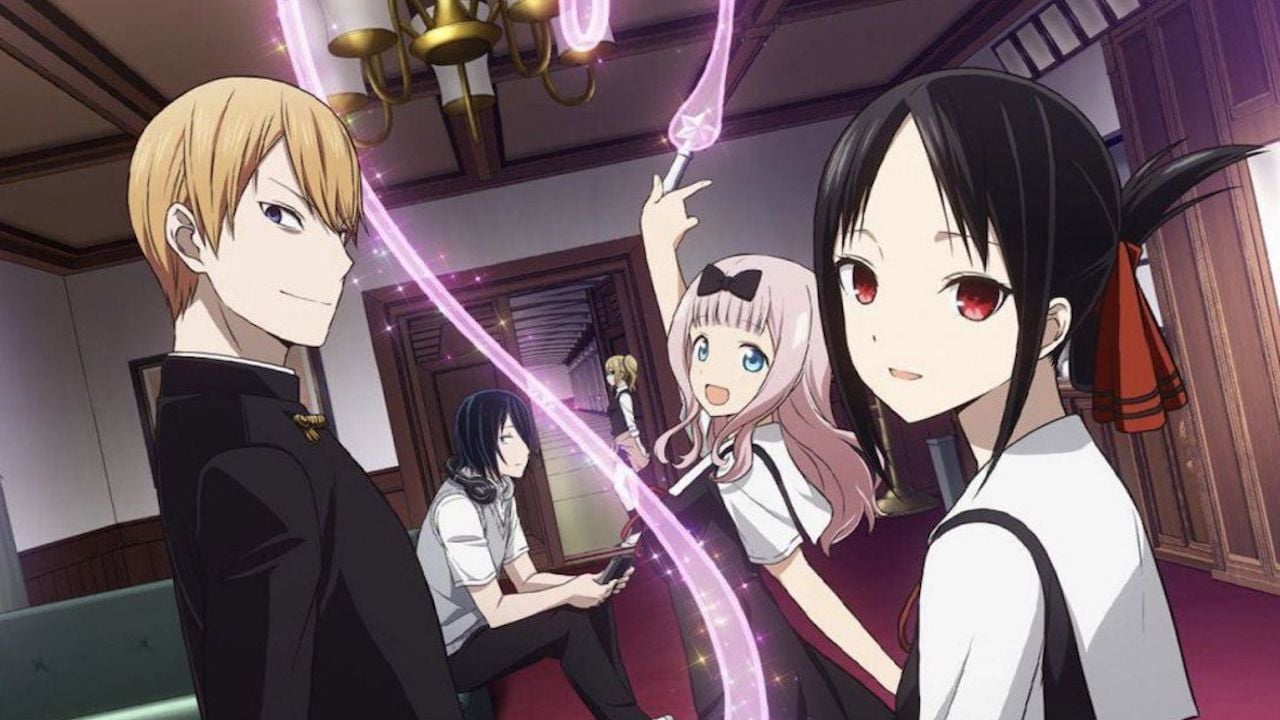
In “Kaguya-sama: Love Is War,” the romantic tension between Kaguya Shinomiya and Miyuki Shirogane crackles with the intensity of an impending storm, their emotions a complex mix of youthful inexperience and fierce competition.
Both characters, guiding their first serious crushes, find themselves ill-equipped to express their feelings openly, especially Kaguya, who lacks familial support and nurturing.
Their relationship is further complicated by their status as academic adversaries within the high-pressure environment of an elite school. This rivalry makes it difficult for either to show vulnerability, with Kaguya struggling more due to her pride.

The duo’s elaborate attempts to trick the other into confessing love first add layers to their interaction, turning their slow-burning romance into a beautiful dance of wits and emotions. The comedic undertones of their strategies ensure that the storyline remains engaging and lively, rather than feeling prolonged or tiresome.
Kaguya-sama: Love Is War is a romantic comedy anime that first aired in January 2019, based on the manga series by Aka Akasaka. Produced by A-1 Pictures, the series follows Kaguya Shinomiya and Miyuki Shirogane, the president and vice president of the prestigious Shuchiin Academy’s student council.
Both Kaguya and Miyuki are deeply attracted to each other, but their pride prevents them from confessing their feelings, leading to a series of psychological battles where each tries to make the other confess first.
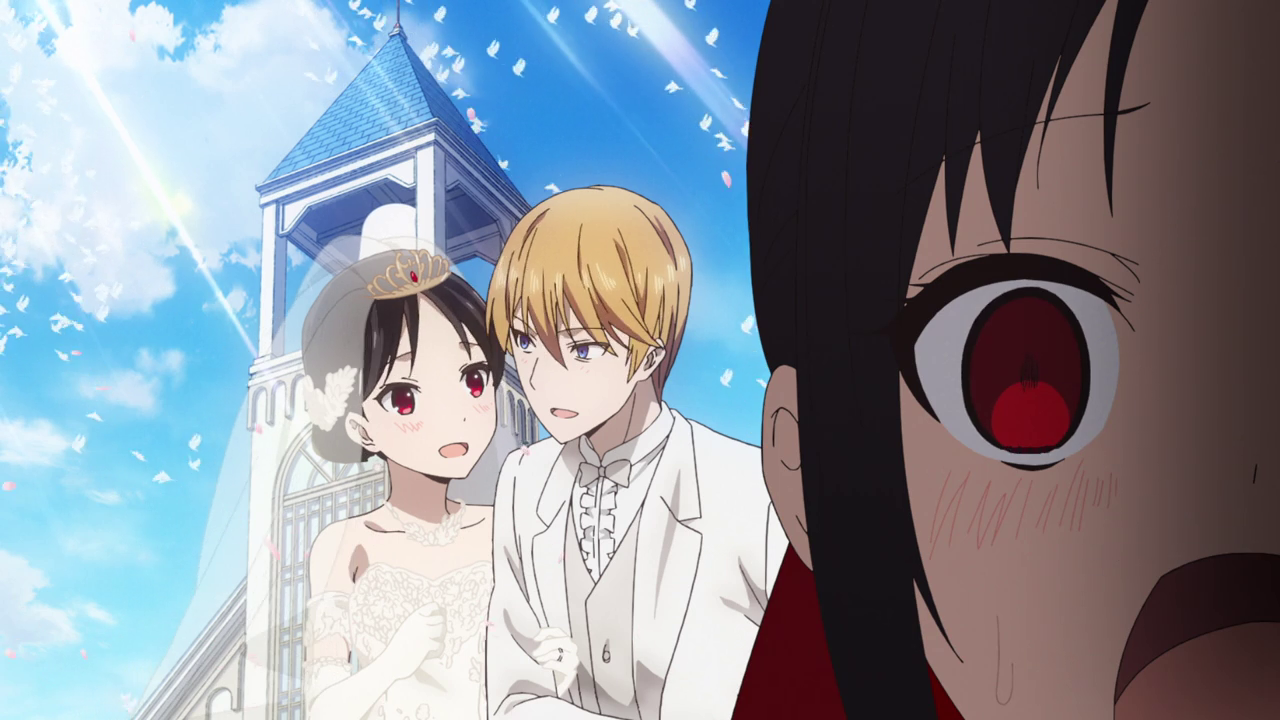
Kaguya Shinomiya is the daughter of a wealthy and powerful family, known for her elegance, intelligence, and cold demeanor. Despite her outward composure, Kaguya is inexperienced when it comes to love and relationships. Miyuki Shirogane, on the other hand, comes from a modest background but is known for his academic excellence and strong work ethic.
As the student council president, he is respected and admired by the student body. Both Kaguya and Miyuki are aware of each other’s affection, but their competitive natures create a deadlock where neither wants to appear emotionally vulnerable.
The story revolves around the mind games and elaborate strategies that Kaguya and Miyuki devise to manipulate each other into confessing their feelings. These battles of wits often involve the other members of the student council, including Chika Fujiwara, the cheerful and unpredictable secretary, and Yu Ishigami, the cynical and socially awkward treasurer.
Chika’s playful and chaotic nature often disrupts Kaguya and Miyuki’s carefully laid plans, while Ishigami’s blunt honesty provides a contrasting perspective on their romantic tension.

Kaguya and Miyuki’s dynamic is defined by a delicate balance of rivalry and romantic tension. Kaguya’s calculated attempts to create intimate situations are often countered by Miyuki’s analytical approach to maintaining control. This psychological tug-of-war creates comedic and emotionally charged moments as both characters struggle to maintain their composed exteriors while grappling with their genuine feelings for each other.
The setting of Shuchiin Academy reflects the elite status and high expectations placed on the students. The academy’s classical architecture and refined atmosphere emphasize the social and academic pressure faced by Kaguya and Miyuki. The student council room becomes the central battleground where most of the psychological games unfold, serving as a symbolic space for their emotional and strategic conflict.
The animation style, handled by A-1 Pictures, is dynamic and expressive, capturing the exaggerated emotional reactions and intense internal monologues of the characters. The use of sharp cuts, dramatic lighting, and stylized visuals enhances the comedic and psychological tone of the series. The characters’ facial expressions and body language are exaggerated to heighten the humor and emotional stakes of each encounter.
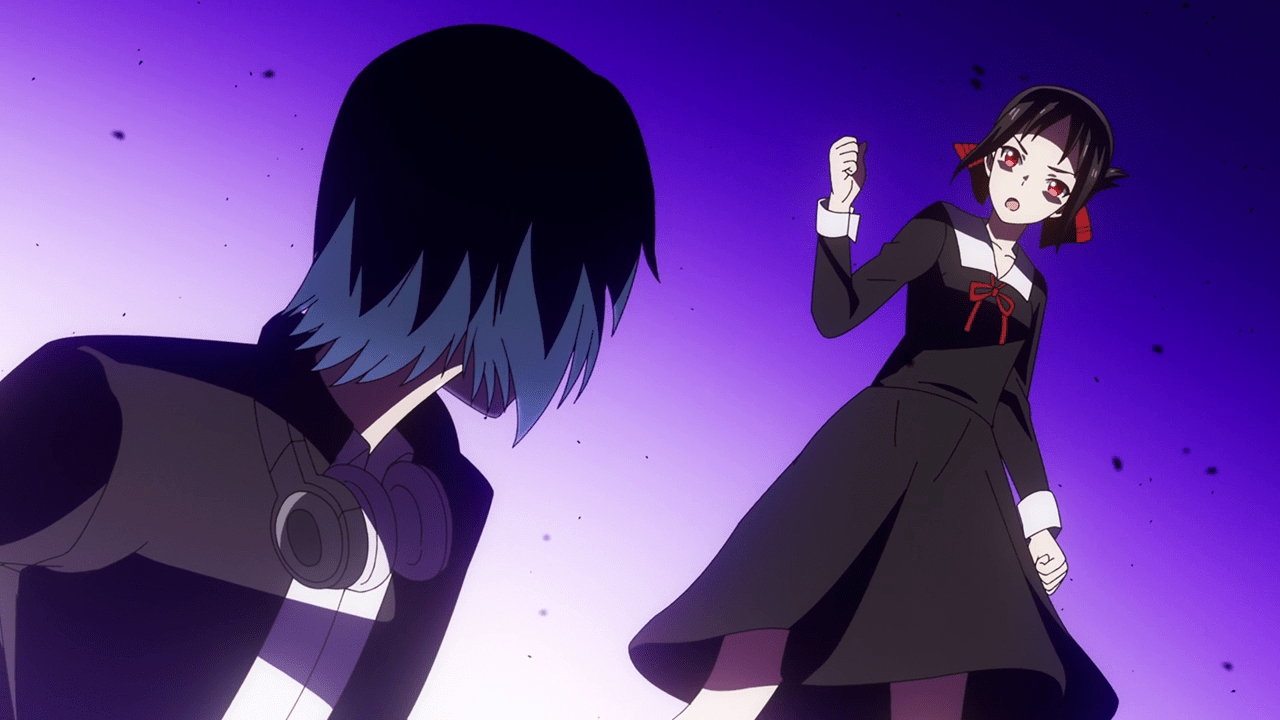
The supporting cast plays a crucial role in shaping the narrative’s emotional and comedic depth. Chika Fujiwara’s carefree nature contrasts with Kaguya and Miyuki’s calculated behavior, introducing unpredictable chaos into their plans.
Yu Ishigami’s quiet and introspective personality adds a layer of emotional grounding, highlighting the vulnerability beneath the competitive façade of Kaguya and Miyuki. Ai Hayasaka, Kaguya’s loyal maid, serves as both a confidante and a source of comedic tension as she tries to guide Kaguya through her emotional confusion.
The anime’s soundtrack, composed by Kei Haneoka, complements the series’ blend of comedy and romance. The opening theme, “Love Dramatic” by Masayuki Suzuki, reflects the playful yet intense nature of Kaguya and Miyuki’s romantic rivalry.

The ending themes, which vary across seasons, range from upbeat and lighthearted to introspective and emotional, capturing the shifting emotional tones of the series. The background music effectively underscores the psychological tension and comedic timing, enhancing the narrative’s impact.
Voice acting plays a key role in conveying the characters’ emotional complexity and comedic timing. Aoi Koga’s portrayal of Kaguya captures the character’s composed exterior and underlying emotional vulnerability.
Makoto Furukawa’s performance as Miyuki balances the character’s intellectual confidence with moments of genuine romantic uncertainty. Konomi Kohara’s portrayal of Chika adds a lively and unpredictable energy, while Ryota Suzuki’s performance as Ishigami conveys quiet depth and emotional sincerity.

The story examines themes of pride, vulnerability, and emotional growth. Kaguya and Miyuki’s struggle to confess their feelings reflects the fear of rejection and emotional exposure. Their psychological battles highlight the tension between rational control and emotional honesty, emphasizing the importance of overcoming pride to achieve genuine emotional connection. Ishigami’s personal arc explores themes of social anxiety and self-acceptance, reinforcing the broader theme of emotional authenticity.
Character development is a significant strength of the series. Kaguya’s growth from emotional restraint to openness reflects her increasing willingness to embrace vulnerability. Miyuki’s journey from calculated detachment to emotional honesty mirrors Kaguya’s internal evolution.
The supporting characters also experience meaningful growth, particularly Ishigami, whose struggle with self-worth and acceptance becomes a poignant subplot that deepens the emotional weight of the story.

The pacing of the anime maintains a balance between comedic mind games and emotional character moments. The series effectively transitions between humor and heartfelt moments without undermining the narrative’s emotional depth. The episodic structure allows for creative and varied storytelling while maintaining a consistent focus on the central romantic tension between Kaguya and Miyuki.
Kaguya-sama: Love Is War stands out for its clever blend of psychological comedy, romance, and emotional depth. Its sharp writing, expressive animation, and well-developed characters create a narrative that is both intellectually engaging and emotionally resonant.
The romantic tension between Kaguya and Miyuki is balanced with comedic misdirection and heartfelt vulnerability, making the series a compelling exploration of love, pride, and emotional connection. The combination of strategic mind games and genuine romantic development ensures that the series remains entertaining and emotionally satisfying.
4. Maomao and Jinshi: Opposites Attract in “The Apothecary Diaries”
In “My Apothecary Diaries,” Jinshi and Maomao inhabit two different worlds, both in terms of their backgrounds and their personalities. Jinshi, born into privilege and surrounded by wealth and political intrigue, stands in stark contrast to Maomao, a palace servant whose exceptional talents stem from her upbringing by a humble apothecary father.
Their differences extend beyond their origins to their very personalities. Jinshi, renowned for his beauty, is unafraid to leverage his charm, while Maomao, conscious of the dangers around her, purposefully downplays her own attractiveness.
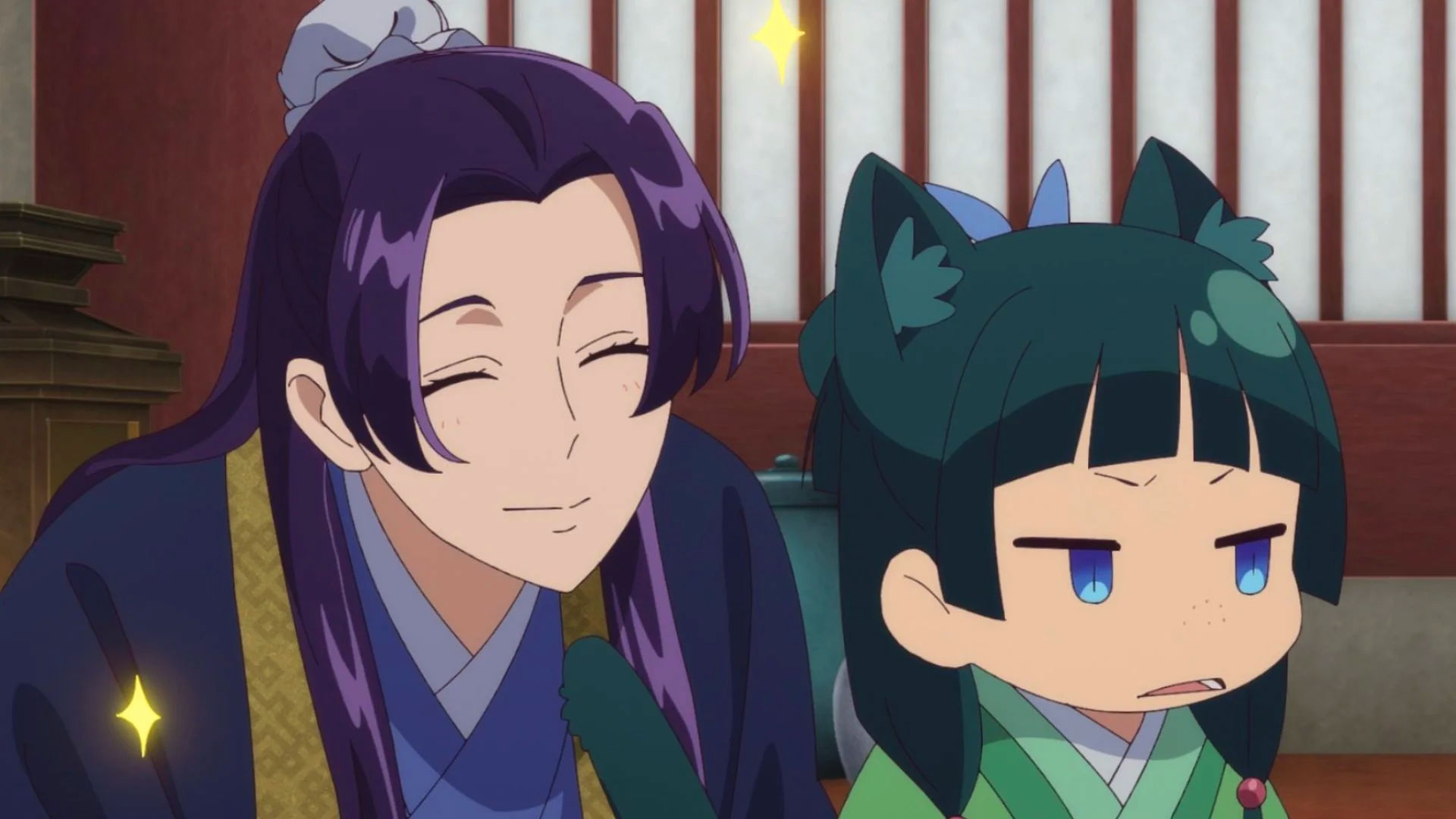
When Jinshi attempts to flirt with her, Maomao’s reactions range from flustered to suspicious, questioning the sincerity behind his advances. While Jinshi is emotive and romantic, Maomao remains reserved and self-contained, often lost in her own thoughts.
Despite these disparities, the potential for romance between them is undeniable. Their contrasting natures not only create tension but also promise depth and complexity to their relationship, making their journey one to watch.
The Apothecary Diaries is a historical mystery and romance anime that premiered in October 2023. Adapted from the light novel series by Natsu Hyuga, the story follows Maomao, a young apothecary with exceptional knowledge of medicine and poisons.

After being kidnapped and sold into the imperial palace as a servant, Maomao tries to keep a low profile. However, her medical expertise soon attracts the attention of Jinshi, a high-ranking eunuch, leading to her involvement in palace intrigues and medical mysteries.
Maomao’s story begins when she is working in the red-light district under her father’s guidance, learning the complexities of herbal medicine and poisons. Her life takes a dramatic turn when she is kidnapped and sold into the inner court as a servant.
Despite her initial reluctance, Maomao’s keen mind and medical skills quickly draw attention when she discreetly saves the emperor’s children from poisoning. Her actions catch the eye of Jinshi, a mysterious and beautiful official who recognizes Maomao’s talents.
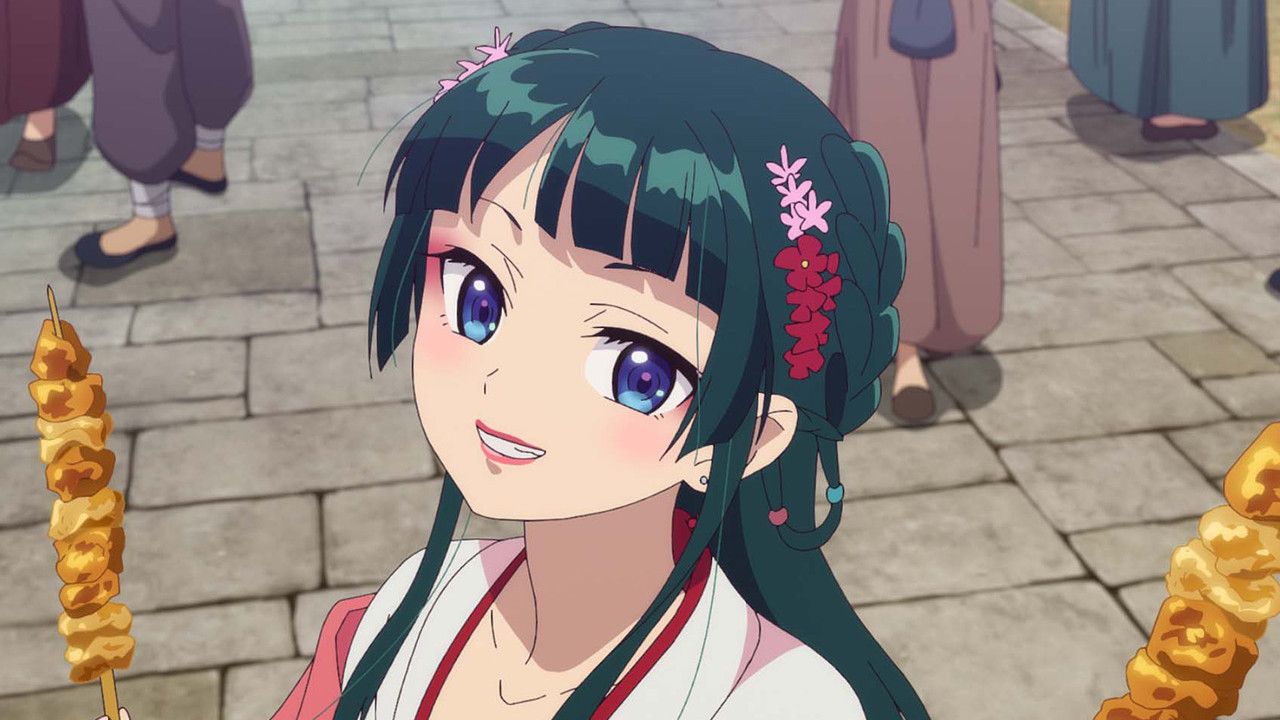
Jinshi’s interest in Maomao leads to her appointment as a lady-in-waiting, where she is tasked with diagnosing and solving the health issues of the emperor’s concubines and their children. Maomao’s blunt personality and sharp analytical mind make her stand out in the rigid and hierarchical palace setting.
Though she tries to avoid attention, her ability to solve complex medical cases and uncover hidden schemes draws her deeper into the political and social tensions of the inner court.
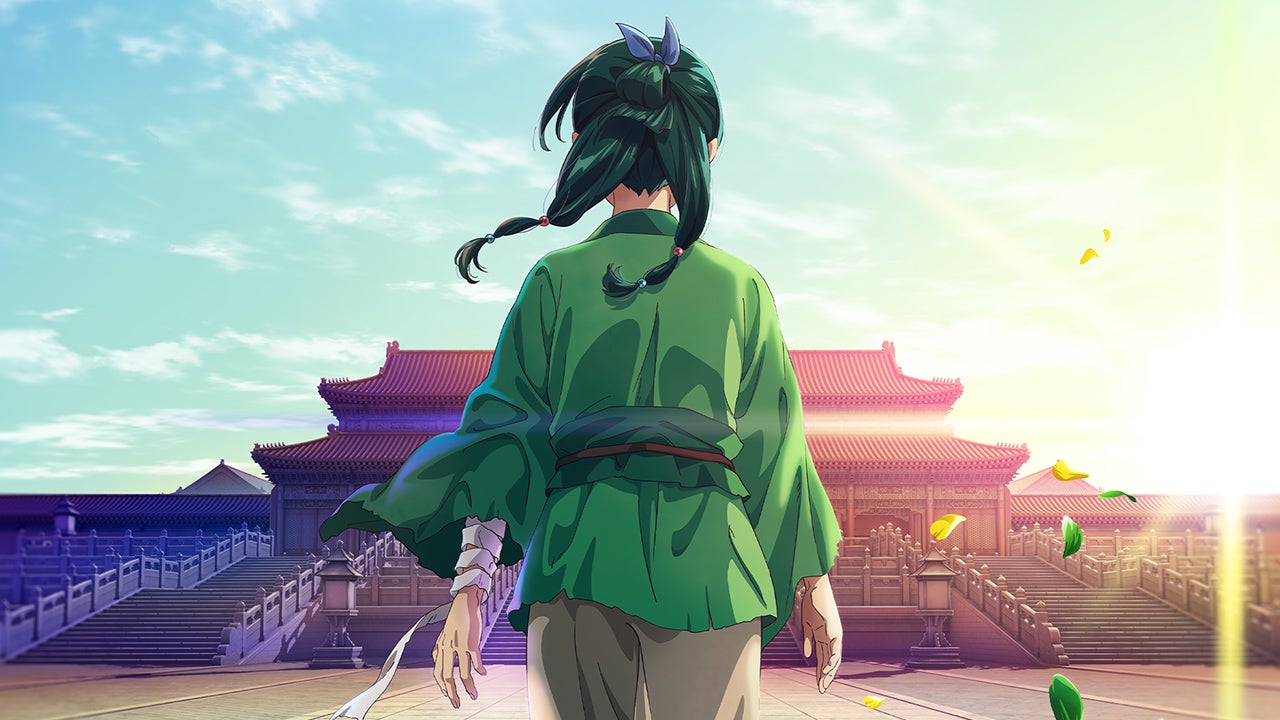
The relationship between Maomao and Jinshi becomes one of the central threads of the story. Jinshi, despite his seemingly delicate appearance, is a calculating and strategic figure. He is intrigued by Maomao’s independence and intelligence, often testing her abilities while protecting her from palace dangers.
Maomao, on the other hand, is wary of Jinshi’s motives but gradually comes to trust him as they navigate the complexities of court politics and medical crises together.
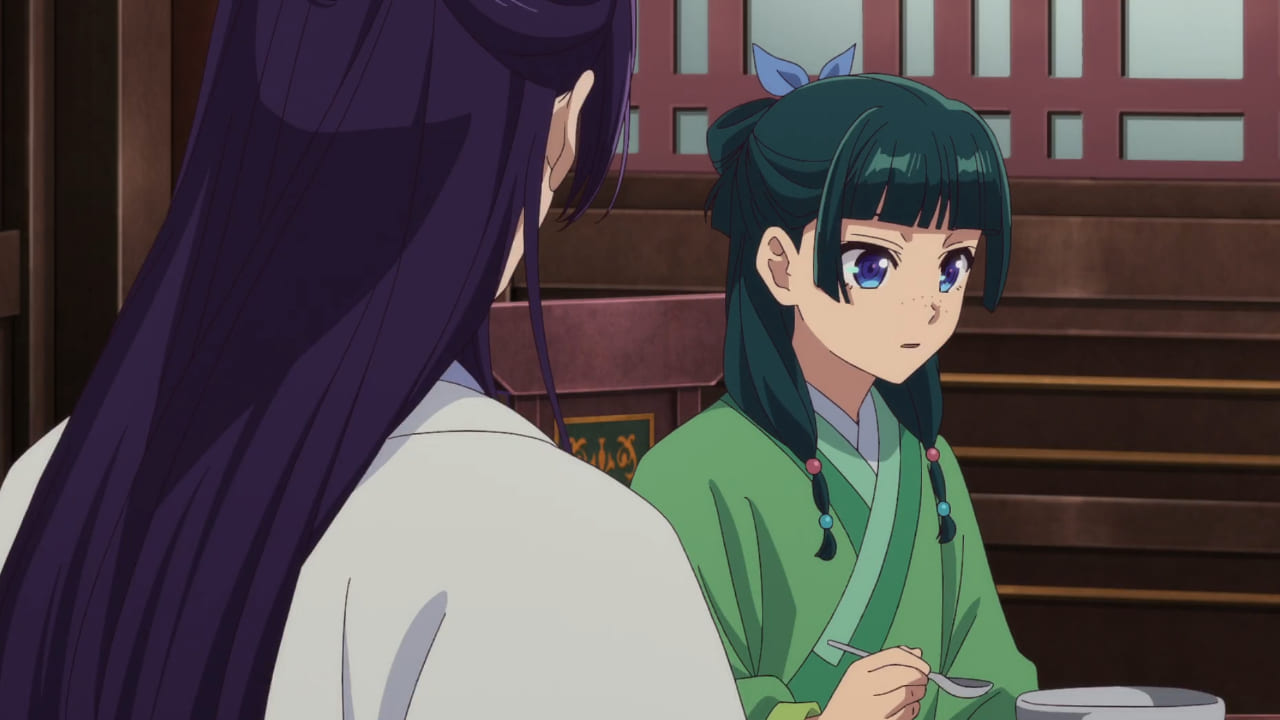
The anime’s setting reflects the influence of classical Chinese imperial culture, with detailed depictions of court etiquette, architectural design, and clothing. The contrast between the luxurious inner court and the harsh realities of life outside the palace adds depth to the narrative. Studio OLM’s animation captures the refined elegance of the imperial court while highlighting the subtle emotional expressions of the characters. The color palette uses soft, muted tones for the palace scenes, reinforcing the controlled and restrained atmosphere of court life.
The supporting cast adds richness to the story’s emotional and political layers. Consorts like Lady Gyokuyou and Lady Lihua represent the different factions within the palace, each with their own ambitions and vulnerabilities. The palace attendants, including Maomao’s fellow servants and the emperor’s advisors, create a web of alliances and conflicts that Maomao must carefully navigate. The balance of personal rivalries and political maneuvering enhances the tension and complexity of the plot.
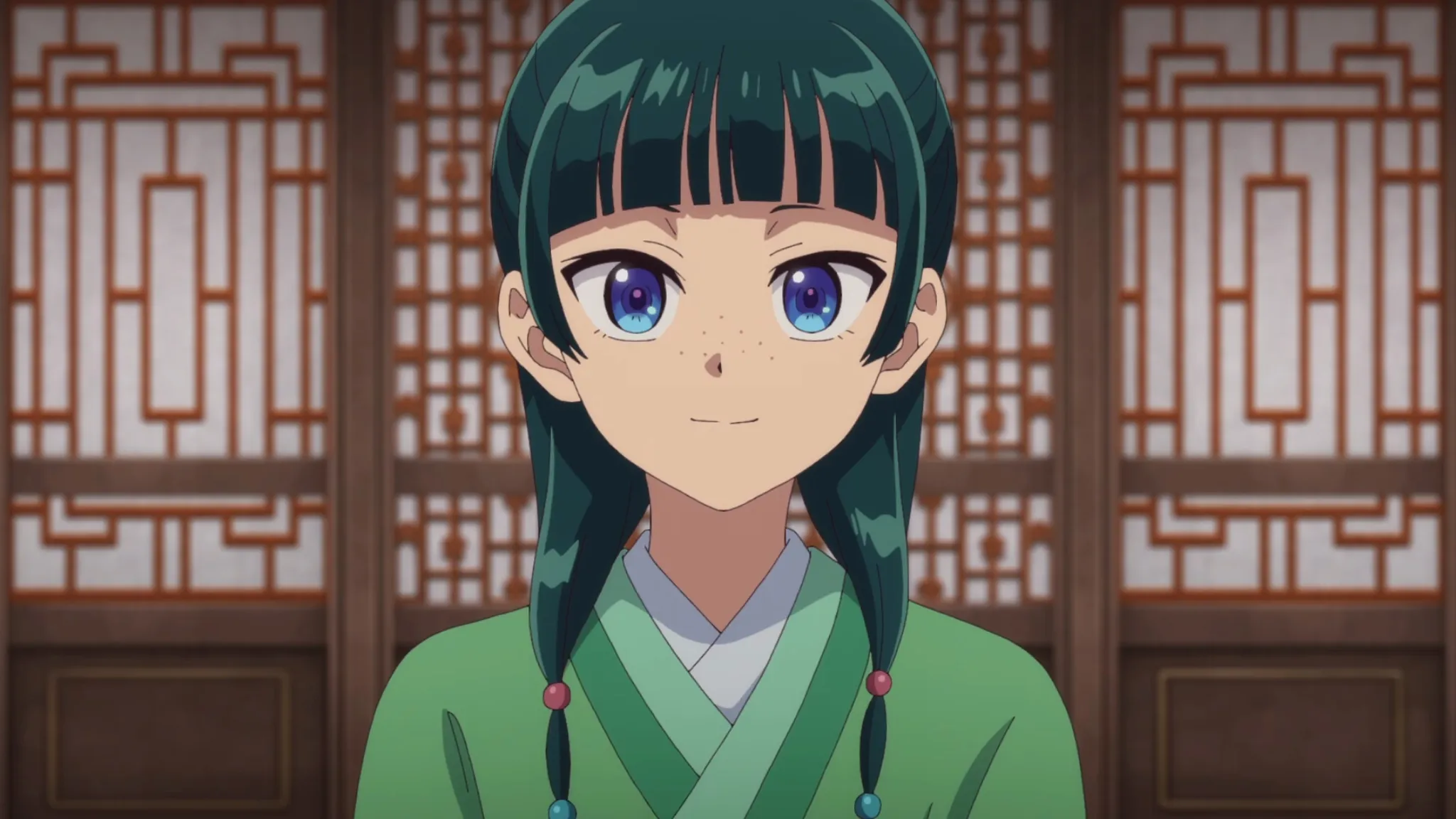
The anime’s soundtrack, composed by Kenichiro Suehiro, enhances the atmosphere of mystery and refinement. The opening theme, “Hana ni Natte” by Aimer, reflects the delicate yet intense emotional undercurrents of the story. The ending theme, “Ai Kotoba” by Uru, carries a softer, reflective tone that highlights Maomao’s inner thoughts and emotional growth. The background score blends traditional instruments with modern orchestration, creating a sense of historical authenticity and emotional depth.
Voice acting plays a crucial role in defining the characters’ personalities and emotional depth. Aoi Yuki’s performance as Maomao captures her sharp wit, blunt demeanor, and underlying warmth. Takeo Otsuka’s portrayal of Jinshi balances charm with hidden calculation, adding intrigue to his interactions with Maomao. The supporting cast, including Yui Ishikawa as Lady Gyokuyou and Akira Ishida as Gaoshun, brings further nuance to the palace’s social and political dynamics.
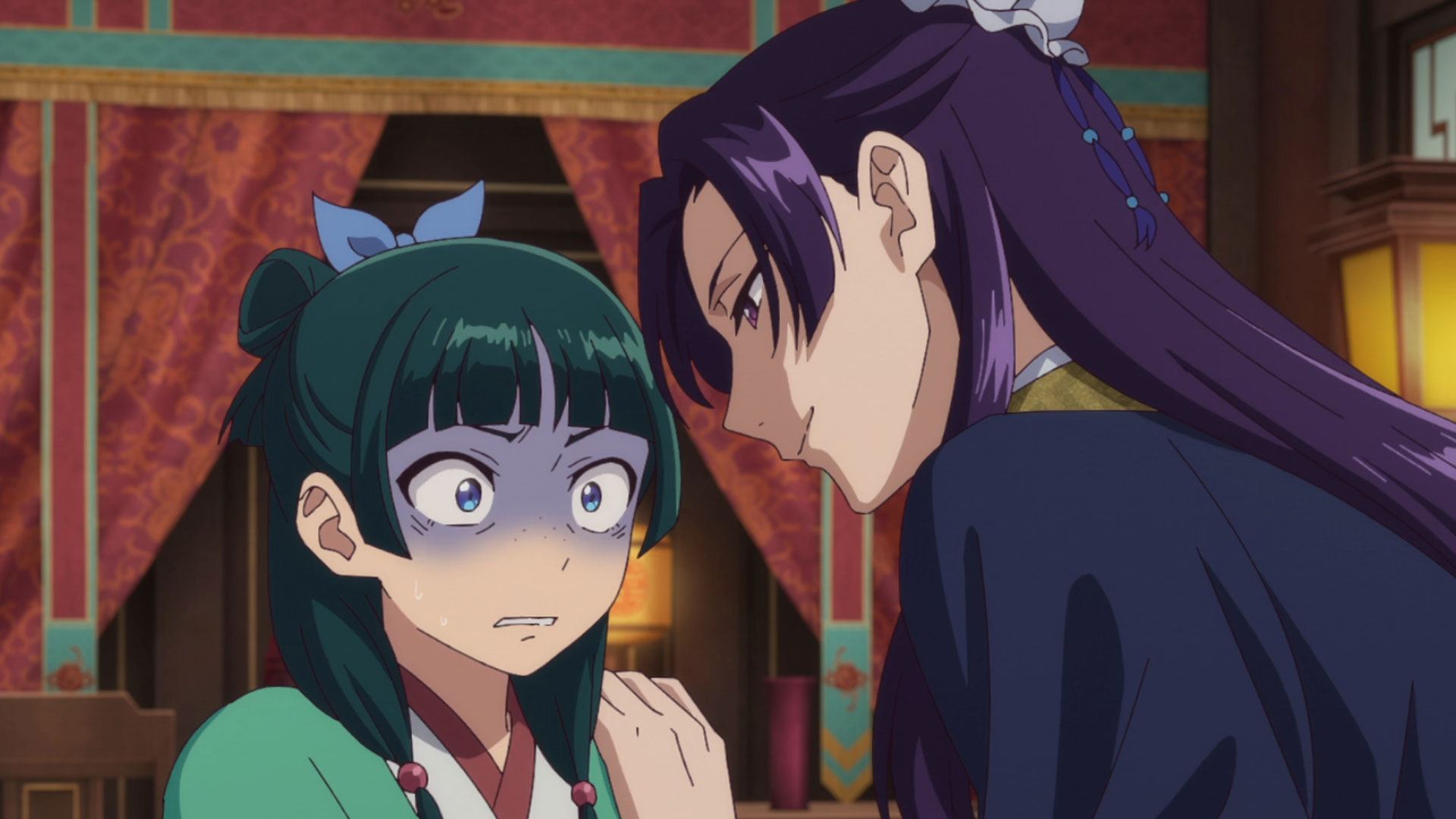
The story investigates themes of power, loyalty, and autonomy. Maomao’s refusal to conform to palace expectations reflects her desire for independence and intellectual freedom. Her ability to challenge the status quo through her medical knowledge highlights the tension between tradition and innovation within the imperial court. Jinshi’s growing trust in Maomao reflects the broader theme of breaking down social barriers and recognizing merit over status.
Character development is a major strength of the series. Maomao’s evolution from a reluctant palace servant to a trusted medical expert mirrors her emotional growth and increasing sense of agency. Jinshi’s gradual shift from a guarded and strategic figure to someone capable of vulnerability and trust reflects his deepening connection with Maomao. The supporting characters also experience meaningful growth, particularly Lady Gyokuyou, whose reliance on Maomao’s expertise challenges the rigid hierarchy of the inner court.
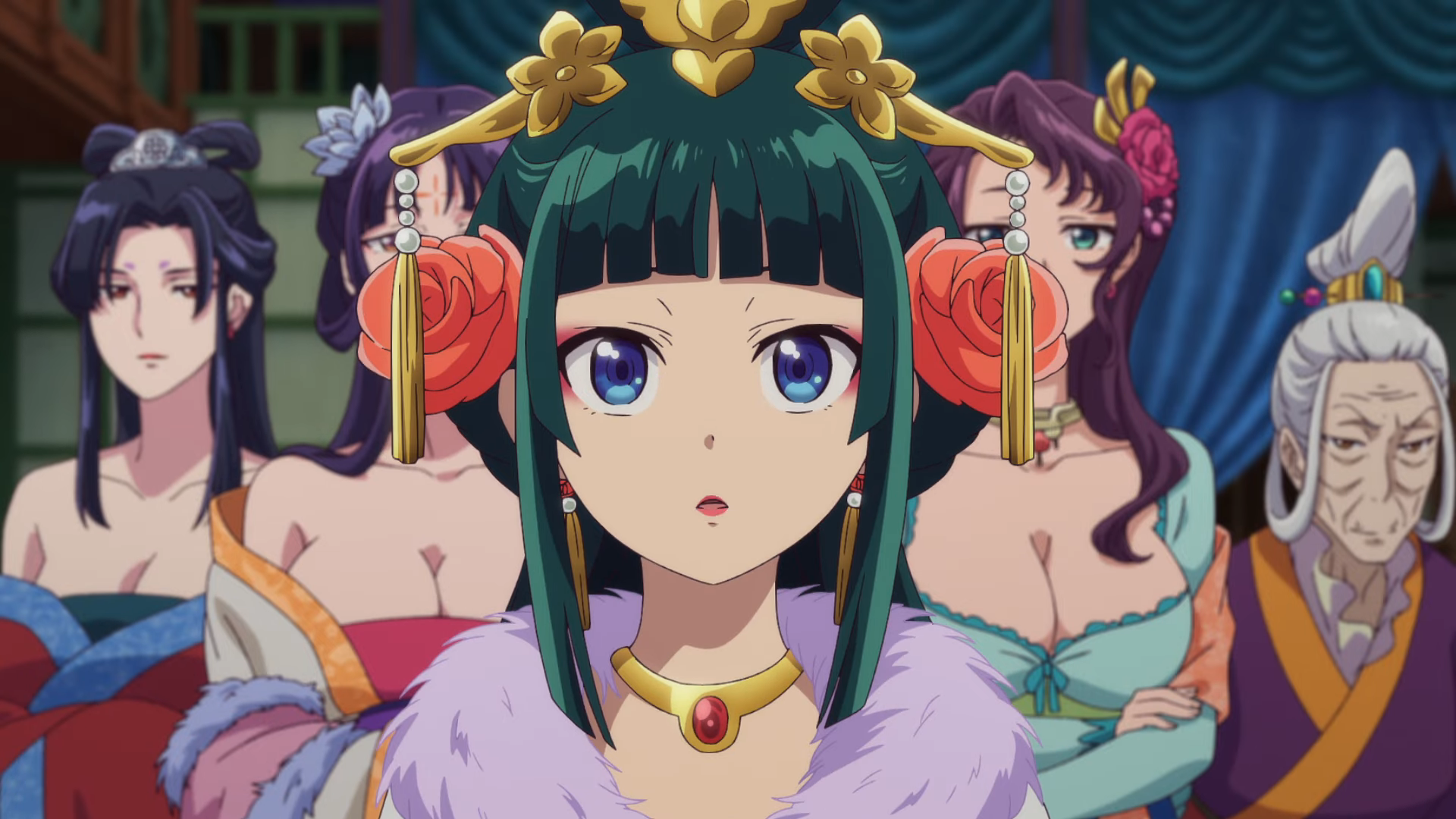
The pacing of the anime carefully balances medical cases with palace intrigue, ensuring that the narrative remains engaging without feeling rushed. Each case introduces new characters and political dynamics while revealing more about Maomao’s background and motivations. The strategic use of flashbacks and inner monologues deepens the emotional impact of Maomao’s decisions and relationships.
The Apothecary Diaries distinguishes itself through its blend of medical mystery, romance, and historical intrigue. Its detailed world-building, complex characters, and subtle emotional tension create a narrative that is both intellectually engaging and emotionally resonant. Maomao’s intelligence and independence make her a compelling protagonist, while Jinshi’s layered personality adds intrigue to their evolving relationship. Supported by refined animation, a haunting soundtrack, and strong performances, the anime offers a sophisticated and engaging viewing experience.
3. Aileen’s Role as a Villainess Love Interest in “I’m the Villainess, So I’m Taming the Final Boss”
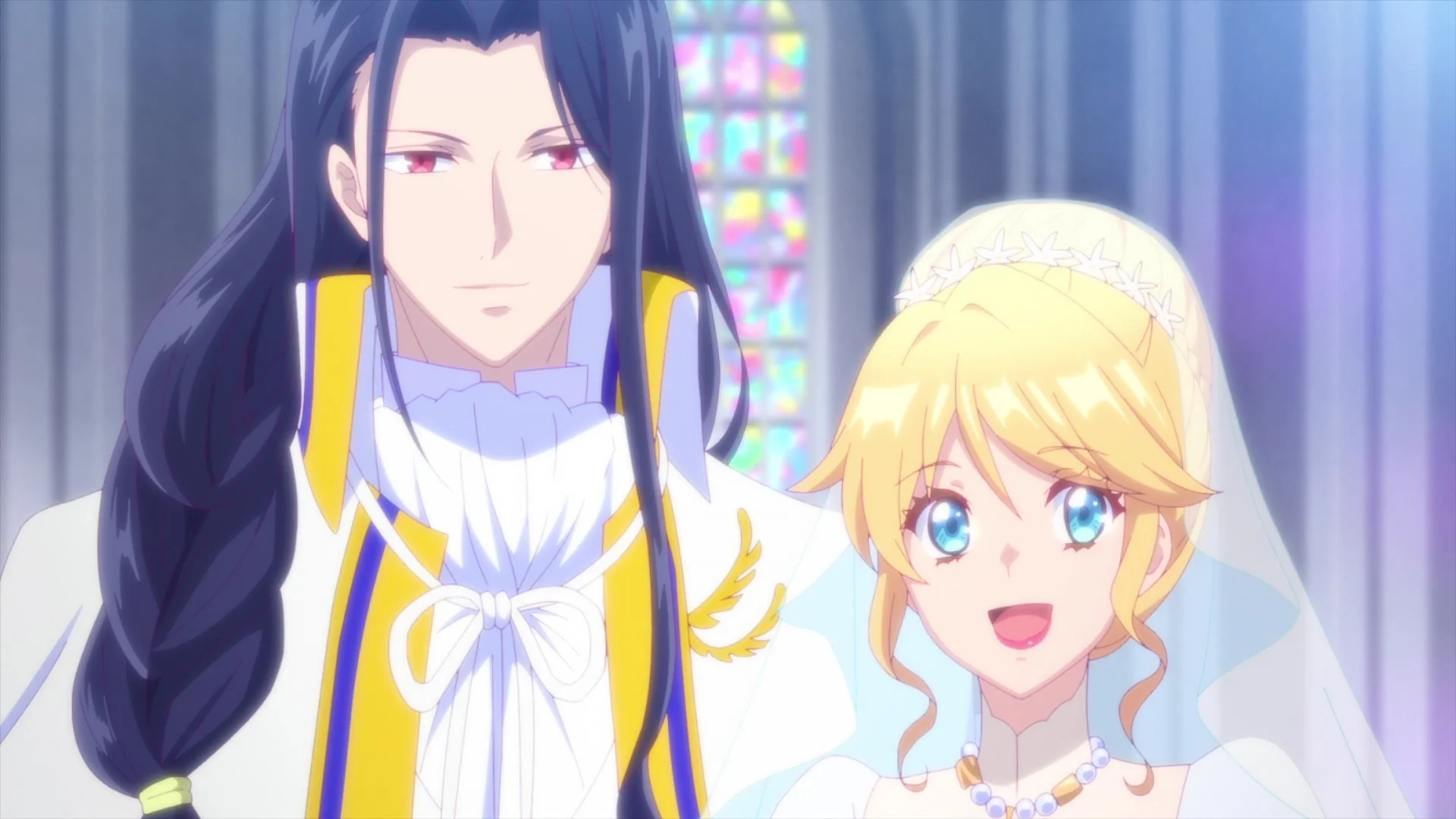
“I’m the Villainess, So I’m Taming the Final Boss” falls within the popular shojo isekai subgenre, offering a fresh take on the classic villainess romance trope.
While villain-hero dynamics have long been a staple in anime, particularly in shojo narratives, male villains typically dominate such narratives, as seen in characters like Zagato from “Magic Knight Rayearth” and Vegeta from “Dragon Ball Z.”
In this story, Aileen undergoes a transformative journey after being reincarnated into her favorite otome game as the ill-fated minor villainess.

Although her personality may differ from the original game version, Aileen proves herself to be cunning and adept at scheming when necessary. Embracing her role as the villain, she utilizes her skills for the greater good, earning admiration from those around her.
Claude, another character with a heart of gold despite his villainous role in the game, quickly sees through Aileen’s façade and becomes gazed at by her. Their dynamic promises a compelling exploration of love and redemption within the context of a villainess romance, adding depth and intrigue to the narrative.
I’m the Villainess, So I’m Taming the Final Boss is a romantic fantasy anime that first aired in October 2022, adapting the light novel series by Sarasa Nagase. Produced by Maho Film, the anime follows the story of Aileen Lauren Dautriche, a noblewoman who regains memories of her past life and realizes that she has been reincarnated into the world of an otome game as the villainess.
Faced with the prospect of a doomed ending, Aileen decides to change her fate by targeting the game’s “final boss” — the demon lord Claude Jeanne Elmir. Blending romance, comedy, and political intrigue, the anime examines themes of redemption, self-determination, and love against the backdrop of a fantasy setting.
Aileen Lauren Dautriche’s story begins when her fiancé, Prince Cedric, publicly ends their engagement in favor of Lilia Rainworth, the game’s heroine. This event triggers Aileen’s memories of her past life, revealing that she is the villainess in an otome game destined to meet a tragic end.
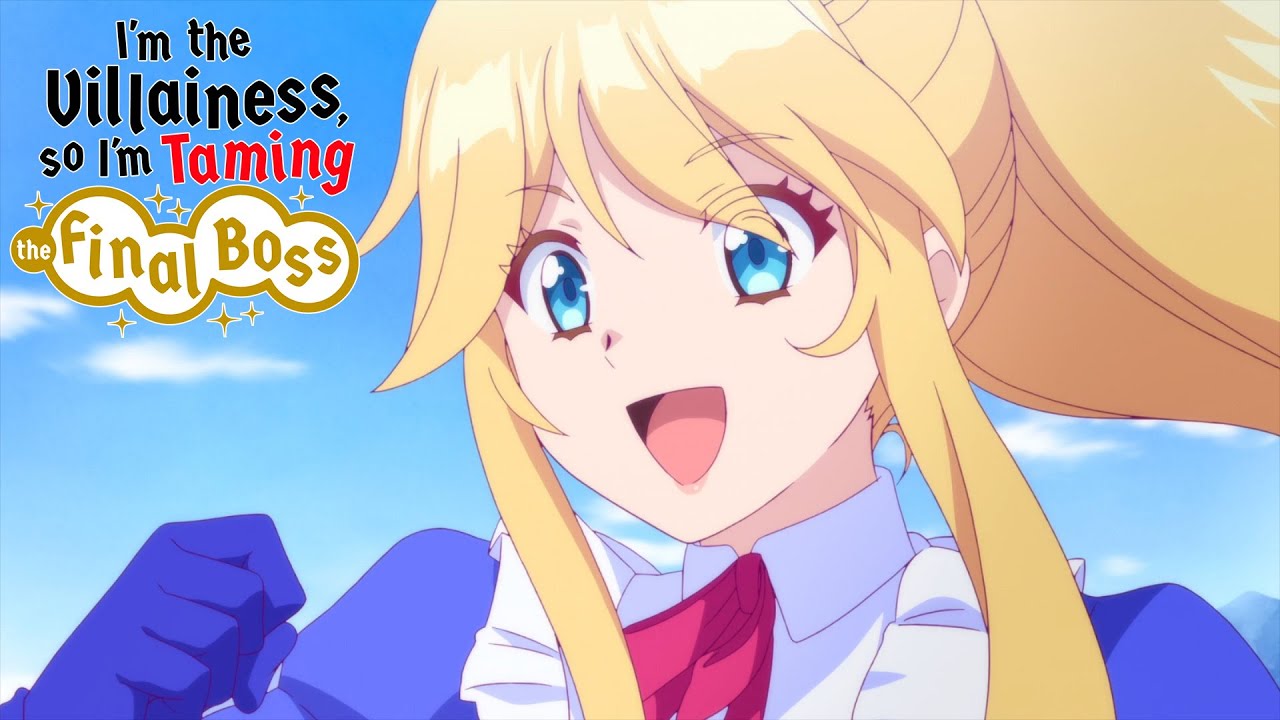
Aware of her impending doom, Aileen takes drastic action by seeking out Claude Jeanne Elmir, the demon lord who serves as the final obstacle in the game. Her plan is to win Claude’s heart and prevent him from unleashing destruction, thereby changing her fate. However, convincing Claude to trust her proves challenging, as he is wary of human intentions due to his troubled past.
The dynamic between Aileen and Claude forms the emotional core of the anime. Aileen is resourceful, confident, and determined to reshape her future, using her knowledge of the game’s events to outmaneuver her enemies and gain Claude’s trust. Unlike the typical villainess, Aileen’s actions are driven by a mix of self-preservation and genuine affection for Claude.
Her straightforward approach and clever problem-solving abilities contrast with Claude’s reserved and cautious nature. Claude, despite his cold exterior, is drawn to Aileen’s sincerity and fearless nature. Their relationship evolves from one of suspicion to mutual respect and romantic connection as Aileen proves her loyalty and devotion.
The anime’s fantasy setting is richly detailed, combining elements of medieval European architecture with magical influences. The demon realm, where Claude resides, is depicted with a darker, more atmospheric tone compared to the vibrant colors of the human world.
The contrast between these two realms visually reflects the growing bridge between Aileen and Claude. Maho Film’s animation style is clean and expressive, with vibrant color palettes and fluid character movements that enhance the story’s emotional and comedic moments. The character designs capture the regal elegance of the nobility and the otherworldly presence of the demons, adding depth to the fantasy environment.

The supporting cast adds complexity to the story’s political and emotional stakes. Lilia Rainworth, the game’s original heroine, serves as a contrasting figure to Aileen, representing the idealized version of nobility.
Prince Cedric’s betrayal serves as a catalyst for Aileen’s transformation, while Keith Eigrid, Claude’s loyal attendant, becomes an important ally for Aileen as she manages court politics and demon realm tensions. The presence of other nobles and political figures creates layers of intrigue and conflict, forcing Aileen to use her intelligence and strategic thinking to outmaneuver her opponents.
The anime’s soundtrack, composed by Natsumi Tabuchi, enhances the emotional and dramatic atmosphere of the story. The opening theme, “Kyо̄kan Sarenakute mo Ii ja Nai” by Rie Takahashi, reflects Aileen’s determined and playful personality, while the ending theme, “Nomic” by ACCAMER, carries a softer, reflective tone that highlights the emotional vulnerability underlying the characters’ relationships.
The background music effectively underscores the tension of political maneuvering and the tenderness of romantic moments, creating a cohesive emotional tone throughout the series.
Voice acting plays a significant role in bringing the characters to life. Rie Takahashi’s performance as Aileen captures the character’s charm, confidence, and underlying emotional depth. Toshiki Masuda’s portrayal of Claude balances his stoic exterior with hints of vulnerability as he gradually opens up to Aileen.
The chemistry between the two leads is palpable, enhancing the romantic tension and emotional payoff of their relationship’s development. The supporting cast, including Yuma Uchida as Cedric and Kana Hanazawa as Lilia, adds further nuance to the interpersonal dynamics and political intrigue.
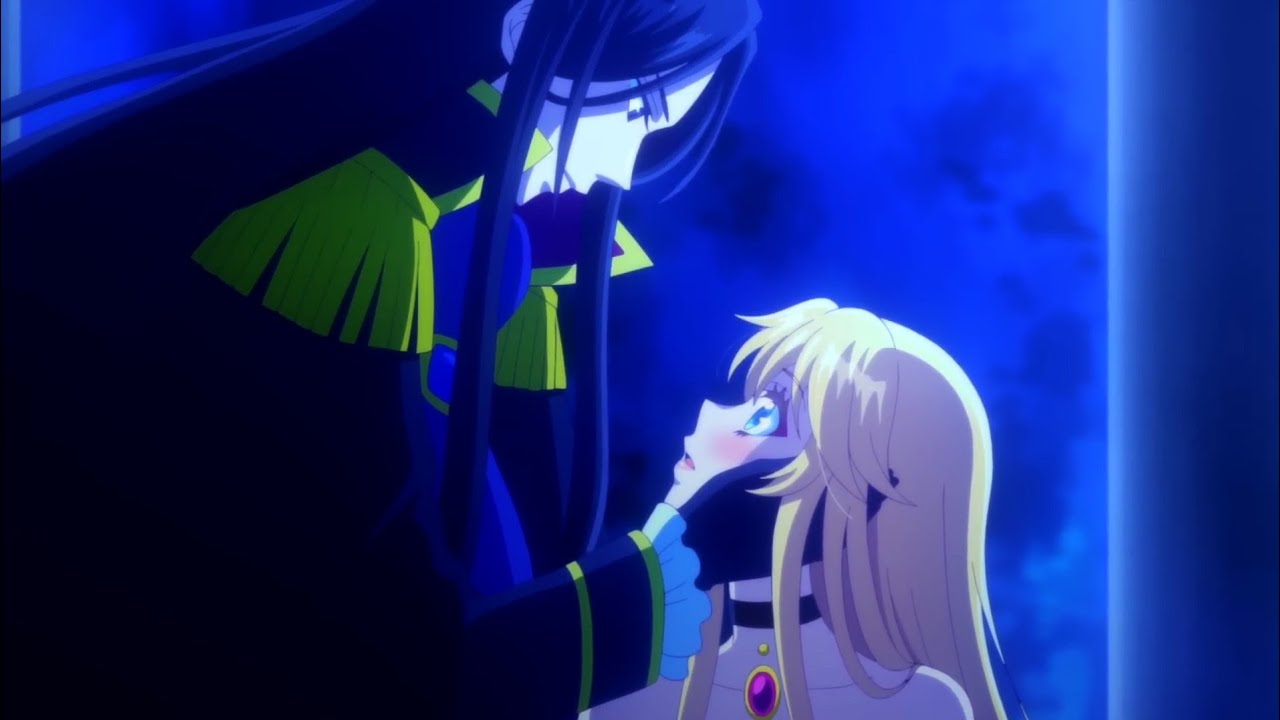
The story examines deeper themes of fate, redemption, and self-worth. Aileen’s determination to rewrite her fate challenges the idea that destiny is fixed, emphasizing the importance of agency and personal growth. Her willingness to risk her safety to protect Claude and prevent conflict reflects her growing sense of responsibility and emotional maturity.
Claude’s journey from distrust to acceptance mirrors Aileen’s emotional growth, reinforcing the idea that love and understanding can overcome prejudice and fear. The political and social conflicts between humans and demons serve as a backdrop for examining themes of prejudice and reconciliation, highlighting the importance of mutual respect and trust.
Character development is one of the anime’s strengths. Aileen evolves from a desperate and fearful villainess into a confident and strategic leader, capable of managing political intrigue and emotional challenges with grace.
Claude’s transformation from a guarded and isolated figure to someone capable of trust and love reflects the emotional impact of Aileen’s unwavering support. The secondary characters also experience meaningful growth, particularly Keith and Cedric, whose shifting loyalties and personal conflicts reflect the broader societal tensions at play.
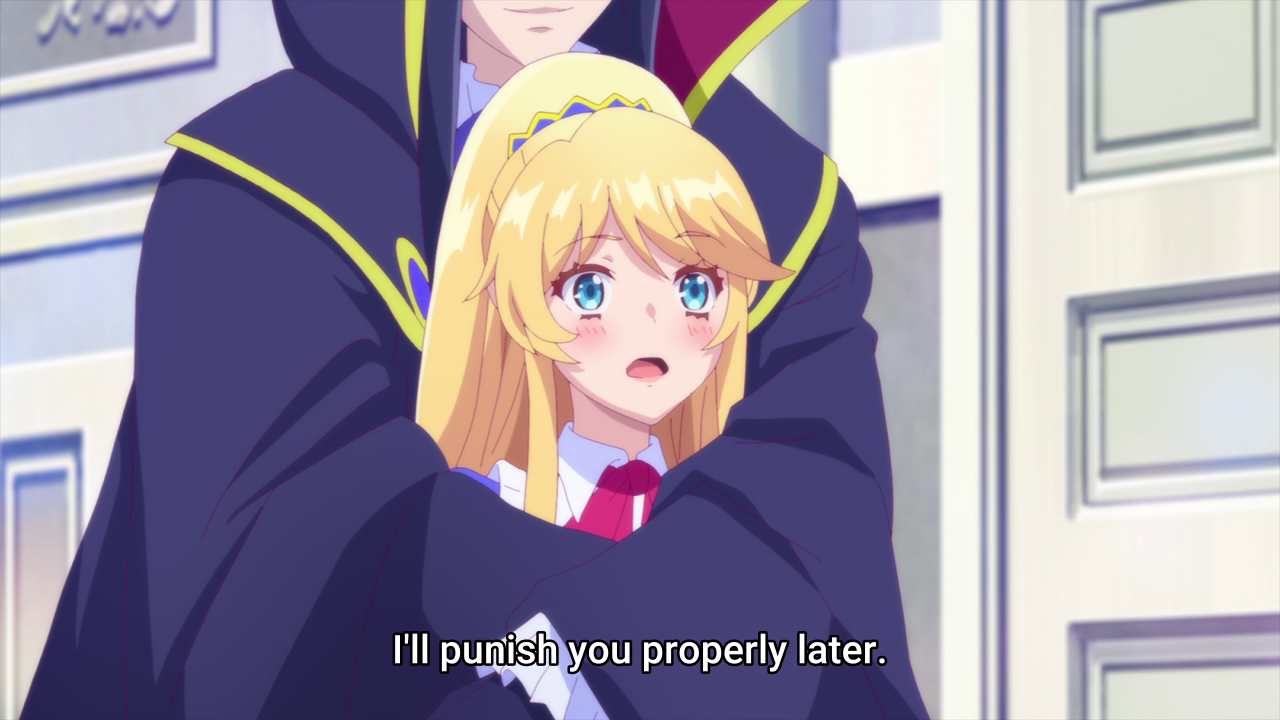
The pacing of the anime balances political maneuvering with romantic development, maintaining a consistent sense of tension and emotional progression. The story avoids unnecessary filler, focusing instead on key events that shape Aileen and Claude’s relationship and the political environment.
The combination of romantic tension, comedic moments, and strategic conflicts creates a dynamic narrative that keeps viewers engaged. While some plot resolutions may feel convenient, the emotional payoff and character growth compensate for these minor inconsistencies.
I’m the Villainess, So I’m Taming the Final Boss stands out as a refreshing take on the villainess genre. Its blend of romance, political intrigue, and fantasy elements creates a compelling narrative driven by well-developed characters and emotionally resonant themes.
Aileen’s resourcefulness and emotional strength make her a standout protagonist, while Claude’s gradual emotional awakening adds depth to their romantic connection. Supported by strong animation, a memorable soundtrack, and nuanced voice performances, the anime delivers a satisfying and emotionally rich viewing experience.
2. Yuki’s College Life Gets Complicated in “A Sign of Affection”

In “A Sign of Affection,” Yuki, a reserved college student, crosses paths with Itsuomi, a charming and multilingual traveler. Their connection grows as Itsuomi learns sign language to communicate directly with Yuki, showcasing his genuine interest and kindness. Despite Yuki’s initial shyness, their budding relationship appears mutually beneficial.
Their heartfelt courtship is not without its challenges, however, as Yuki’s childhood friend Oshi casts doubt on their romance. Oshi’s protective nature towards Yuki borders on overbearing, fueled by his hidden feelings for her.
The ensuing love triangle adds complexity to the narrative, reflecting the timeless theme of romantic conflict and jealousy.

While Yuki and Itsuomi navigate their budding romance, Oshi’s doubts and underlying emotions introduce tension and uncertainty. As the story unfolds, the realistic motivations behind the love triangle hint at an inevitable resolution, promising engaging developments for readers invested in the characters’ relationships.
A Sign of Affection is a romantic drama anime based on the manga Yubisaki to Renren by Suu Morishita. The anime premiered in January 2024, produced by Ajia-do Animation Works. It follows the story of Yuki Itose, a hearing-impaired college student, and Itsuomi Nagi, a multilingual traveler with a calm and worldly personality.
The story focuses on their growing connection as they navigate the challenges of communication and emotional vulnerability. The anime beautifully explores themes of love, understanding, and acceptance, blending tender moments with realistic portrayals of Yuki’s experiences as someone who is deaf.

Yuki Itose is a kind-hearted and gentle college student who was born with hearing loss. She relies on sign language and lip reading to communicate with others, but her social world remains small, consisting mainly of her close friend Rin Fujishiro. Yuki’s life changes when she meets Itsuomi Nagi, a charming and confident upperclassman who speaks multiple languages and has traveled extensively.
Despite not knowing sign language, Itsuomi takes a genuine interest in understanding Yuki’s world, making an effort to communicate with her and respect her unique perspective. Their relationship develops as Yuki steps outside of her comfort zone and Itsuomi begins to see the world through her eyes.
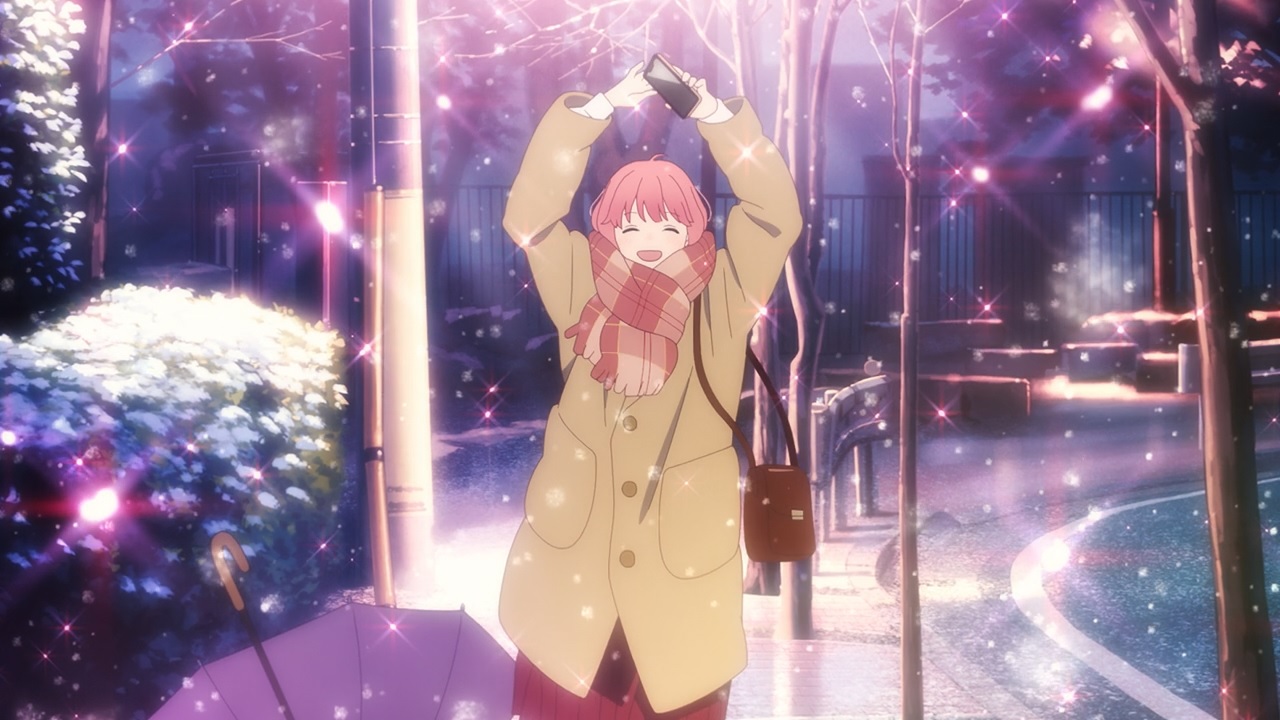
The relationship between Yuki and Itsuomi is the emotional core of the anime. Yuki is initially shy and hesitant, unsure of how to respond to Itsuomi’s direct and open nature. Itsuomi’s calm and patient demeanor creates a safe space for Yuki, encouraging her to express herself more openly.
Their relationship develops through quiet moments of connection, from handwritten notes and text messages to shared glances and gentle touches. Itsuomi’s willingness to learn sign language and Yuki’s growing confidence highlight the effort and understanding needed to build a meaningful relationship. Their bond feels authentic and heartfelt, capturing the delicate balance between vulnerability and trust.
The anime’s visual style reflects the story’s soft and emotional tone. Ajia-do Animation Works uses a gentle color palette dominated by pastel shades and warm lighting, creating a calming atmosphere. Character designs are expressive, with subtle facial expressions conveying Yuki’s internal emotions and Itsuomi’s quiet strength.

The use of hand movements and body language is carefully animated, emphasizing the importance of non-verbal communication. Background details, such as the sunlight filtering through windows or the soft glow of streetlights, enhance the emotional weight of each scene without distracting from the characters’ interactions.
The soundtrack, composed by Yukari Hashimoto, complements the anime’s gentle atmosphere. The opening theme, “Yuki no Oto” by Kaze Fujii, sets a reflective and tender mood, while the ending theme, “snowspring” by Keina Suda, adds a quiet sense of longing and warmth.
The background music is understated, allowing the natural sounds of the environment and the emotional pauses between dialogue to create a sense of intimacy. The thoughtful use of silence during key moments reflects Yuki’s experience of the world and deepens the emotional impact of her and Itsuomi’s connection.

Voice acting plays a crucial role in conveying the emotional depth of the characters. Sumire Morohoshi’s portrayal of Yuki captures her softness and quiet determination, balancing her shyness with moments of emotional strength.
Yuu Miyazaki’s performance as Itsuomi conveys a calm and composed presence, with subtle warmth in his tone as he opens up to Yuki. The supporting cast, including Azumi Waki as Rin and Takeo Ootsuka as Kyouya, adds depth to the social and emotional dynamics surrounding Yuki and Itsuomi. The careful balance of spoken dialogue, signed communication, and moments of silence enhances the authenticity of the characters’ experiences.
A Sign of Affection explores the challenges and beauty of communication in a relationship where traditional dialogue is not always possible. Yuki’s hearing impairment is portrayed with sensitivity and realism, avoiding clichés or overly dramatized conflicts. The story emphasizes the importance of effort and understanding, showing how meaningful connections can be formed through gestures, expressions, and emotional presence. Itsuomi’s willingness to learn Yuki’s language and Yuki’s courage in opening her heart reflect the mutual growth that defines their relationship.
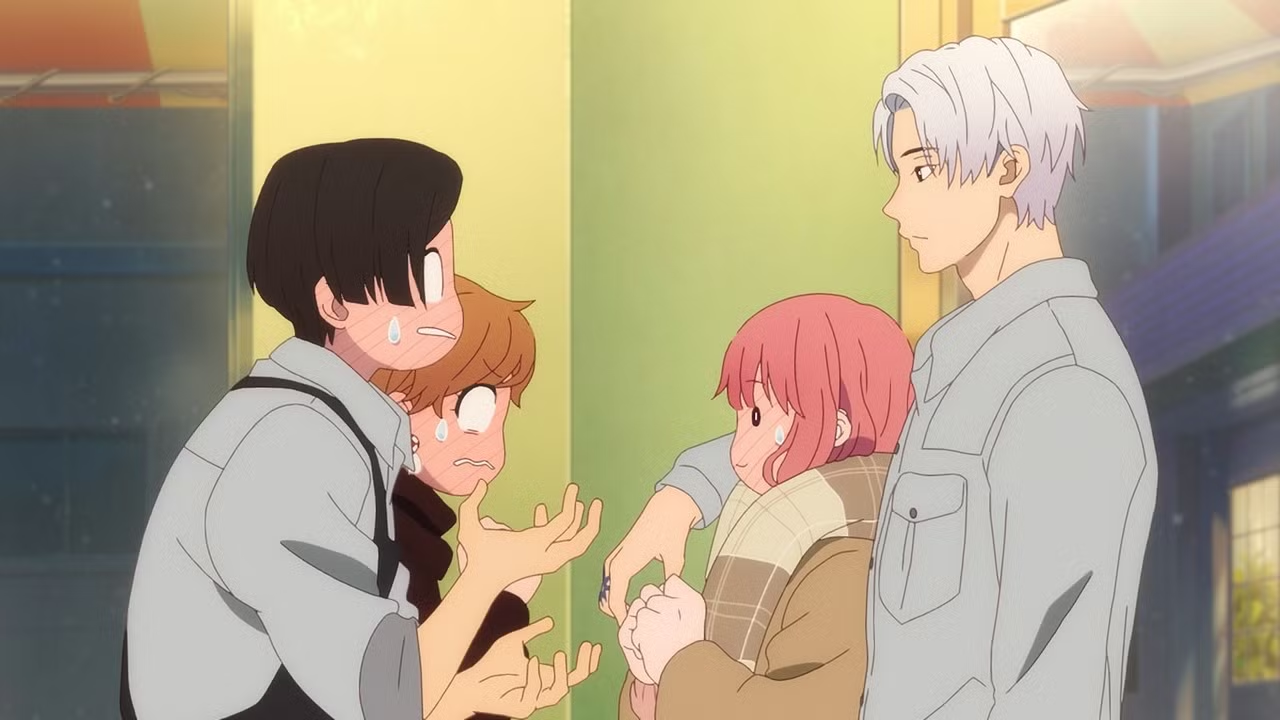
The anime also explores themes of independence and self-worth. Yuki’s journey involves not only opening up to Itsuomi but also gaining confidence in herself and her ability to navigate the world. Itsuomi’s role as a supportive partner helps Yuki realize that her value is not defined by her hearing loss.
At the same time, Itsuomi learns to slow down and appreciate the depth of emotional connection that Yuki offers. Their evolving relationship reflects a balance of give and take, where both characters grow through their connection with each other.
Character development is handled with care and consistency. Yuki’s transformation from a reserved and self-conscious girl to someone who takes emotional risks feels natural and rewarding. Itsuomi’s character, while initially mysterious and detached, gradually reveals layers of warmth and vulnerability as he deepens his connection with Yuki.
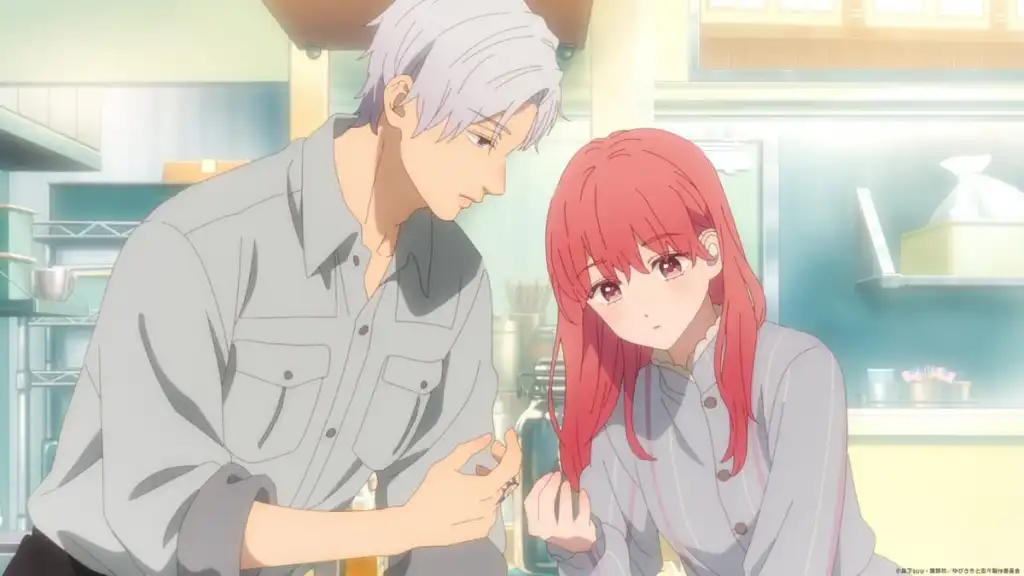
The supporting characters, such as Rin and Kyouya, provide additional context and emotional grounding, highlighting the impact of Yuki and Itsuomi’s relationship on their wider social circle.
The pacing of A Sign of Affection is measured and thoughtful, allowing the emotional beats to resonate without feeling rushed. The focus remains on the subtle changes in Yuki and Itsuomi’s relationship rather than dramatic plot twists or conflicts.
This slow build creates a sense of authenticity, reflecting the realistic nature of navigating a relationship shaped by communication barriers. The deliberate storytelling allows viewers to appreciate the quiet moments of connection and the gradual deepening of trust between Yuki and Itsuomi.
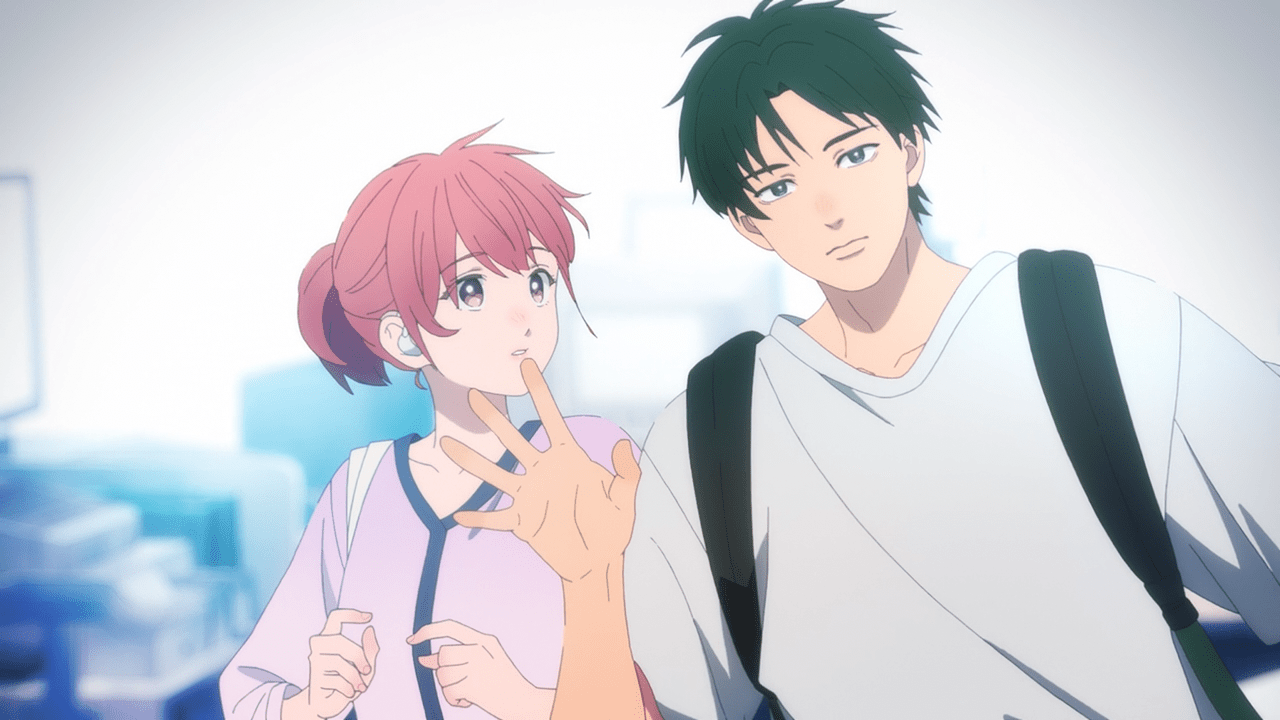
A Sign of Affection stands out as a heartfelt and emotionally nuanced romance anime. Its sensitive portrayal of hearing impairment and the challenges of communication adds depth to the story without overshadowing the central romantic development.
The combination of soft and expressive animation, a gentle soundtrack, and strong voice performances creates an emotionally resonant viewing experience. Yuki and Itsuomi’s relationship feels authentic and moving, grounded in mutual respect and emotional vulnerability.
A Sign of Affection offers a touching exploration of love, communication, and self-acceptance, leaving a lasting impression through its quiet beauty and emotional sincerity.
1. Family Dynamics in “My Happy Marriage”

In “My Happy Marriage,” Miyo Saimori finds herself marginalized within her own family due to her lack of psychic powers and her status as a child from her father’s previous marriage. Treated as a scapegoat and burden, she anticipates similar mistreatment when she is betrothed to a wealthy suitor with a dubious reputation.
Despite initial apprehensions, Miyo’s fiancé, Kiyoka Kudo, surprises her with his kindness and understanding. As their relationship blossoms, Kudo becomes Miyo’s unwavering protector, swiftly coming to her aid whenever she faces adversity. His protective instincts extend to those who dare to harm her, showcasing his commitment and devotion.
As Miyo and Kudo navigate the complexities of their engagement, the contrast between Miyo’s past mistreatment and Kudo’s steadfast support underscores the themes of familial expectations and personal resilience.
Their evolving relationship promises both heartwarming moments and compelling challenges as they strive for happiness amidst familial pressures.
My Happy Marriage is a heartwarming romance anime that first aired in July 2023, adapting Akumi Agitogi’s light novel series of the same name. Produced by Kinema Citrus, the anime blends historical and supernatural elements with an emotional narrative centered around Miyo Saimori and Kiyoka Kudou.
Set in a Taisho-era-inspired world, the story follows Miyo, a young girl burdened by a difficult past, as she slowly finds love and acceptance through an arranged marriage with the seemingly cold and ruthless Kiyoka. The anime quickly gained attention for its touching storyline, delicate animation, and emotionally charged character development.
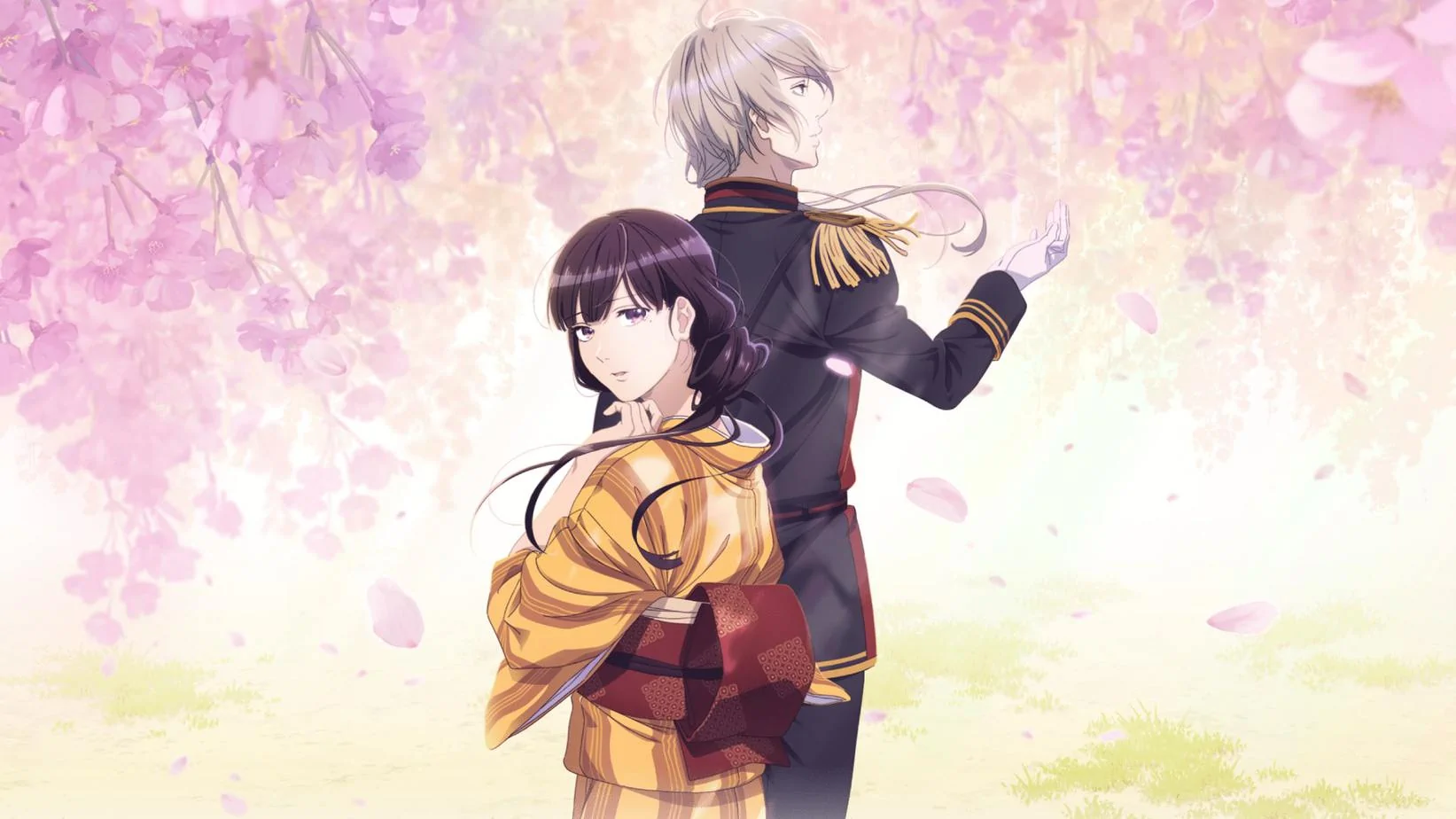
The story introduces Miyo Saimori as the daughter of a prestigious family, but she lives a life of neglect and mistreatment after her mother’s death. Her father remarries, and her stepmother and stepsister treat her as a servant rather than a family member. Despite her lineage, Miyo is seen as worthless because she lacks supernatural abilities, which are highly valued in this society.
When her family arranges a marriage with Kiyoka Kudou, a feared and powerful military commander known for driving away previous fiancées with his cold demeanor, Miyo prepares herself for a life of misery. However, Kiyoka surprises her with his gentle side, sparking a slow and beautiful bond between them.
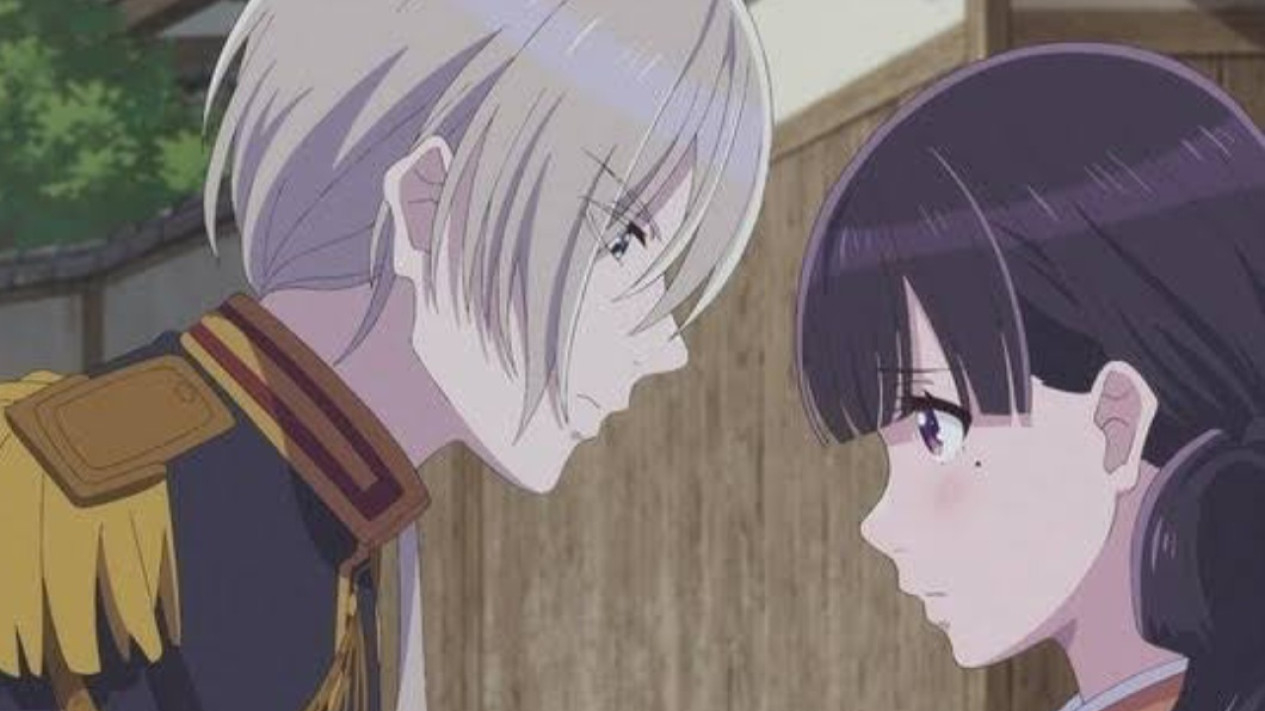
The relationship between Miyo and Kiyoka develops gradually and authentically. Miyo’s initial fear and hesitation reflect her traumatic upbringing, but Kiyoka’s patient and protective nature allows her to open up over time.
The anime explores their growing trust and emotional vulnerability, showing how Kiyoka’s warmth helps Miyo heal from her past wounds. Kiyoka, initially portrayed as intimidating and harsh, reveals a thoughtful and deeply caring side as he supports Miyo. Their relationship is not rushed, giving viewers time to appreciate the nuances of their emotional growth.
The anime’s visual presentation is one of its strongest points. Kinema Citrus delivers beautiful, detailed animation with a soft color palette that reflects the story’s emotional tone. The character designs are elegant and expressive, capturing the quiet strength and vulnerability of Miyo and the composed but compassionate nature of Kiyoka.
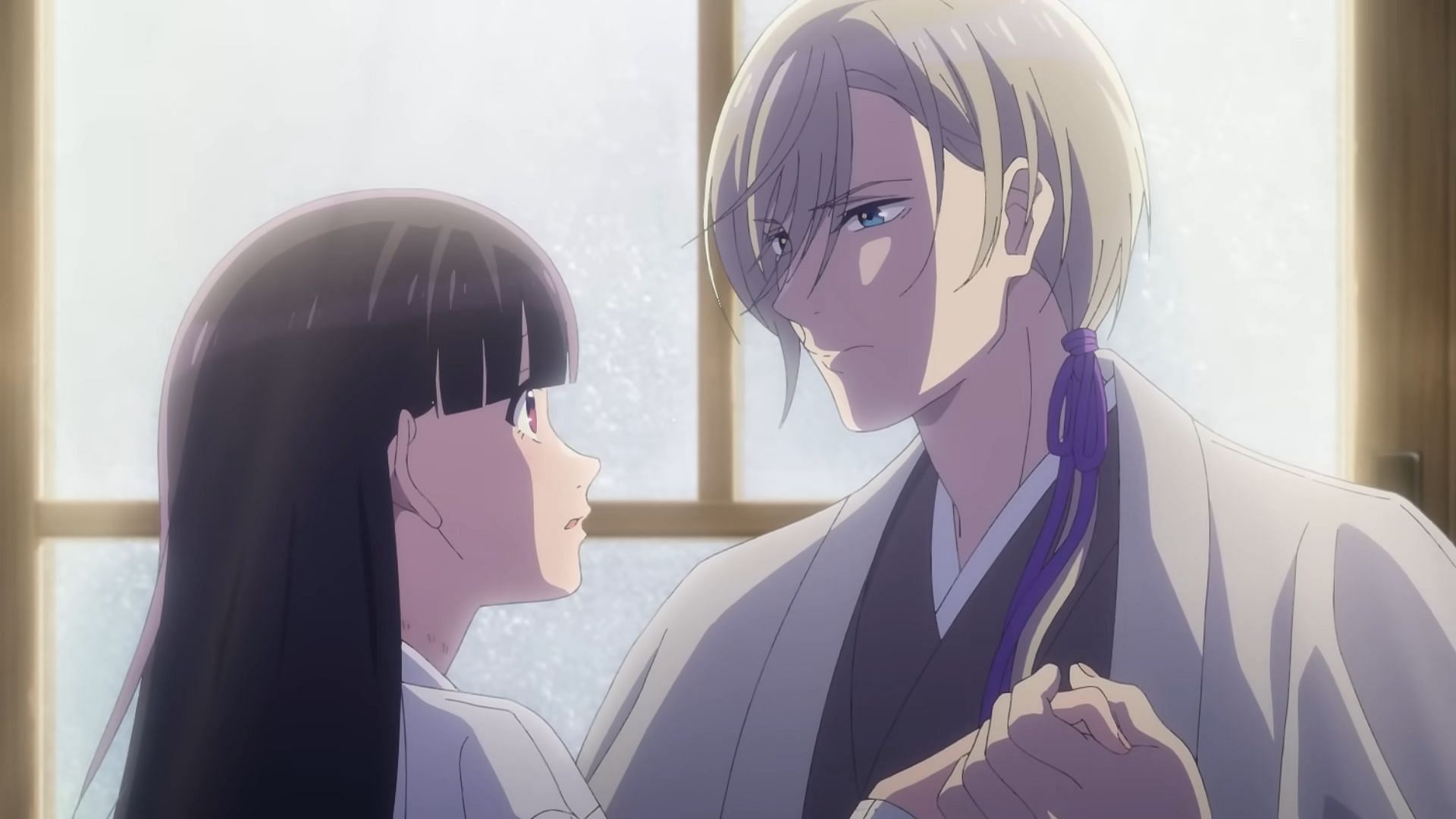
Backgrounds are carefully detailed, creating a rich historical atmosphere that enhances the sense of immersion. The use of lighting and soft shading creates a dreamlike quality that matches the delicate tone of the story.
The soundtrack, composed by Evan Call, plays a significant role in enhancing the emotional depth of the anime. The opening theme, “Anata no Soba ni” by Riria., sets the tone with its soothing yet melancholic melody, while the ending theme, “Vita Philosophica” by Kashitarou Itou, complements the story’s reflective nature.
The background music effectively heightens key emotional moments without overwhelming the dialogue or visuals. The careful balance of music and silence allows the emotional weight of Miyo and Kiyoka’s interactions to resonate more deeply.
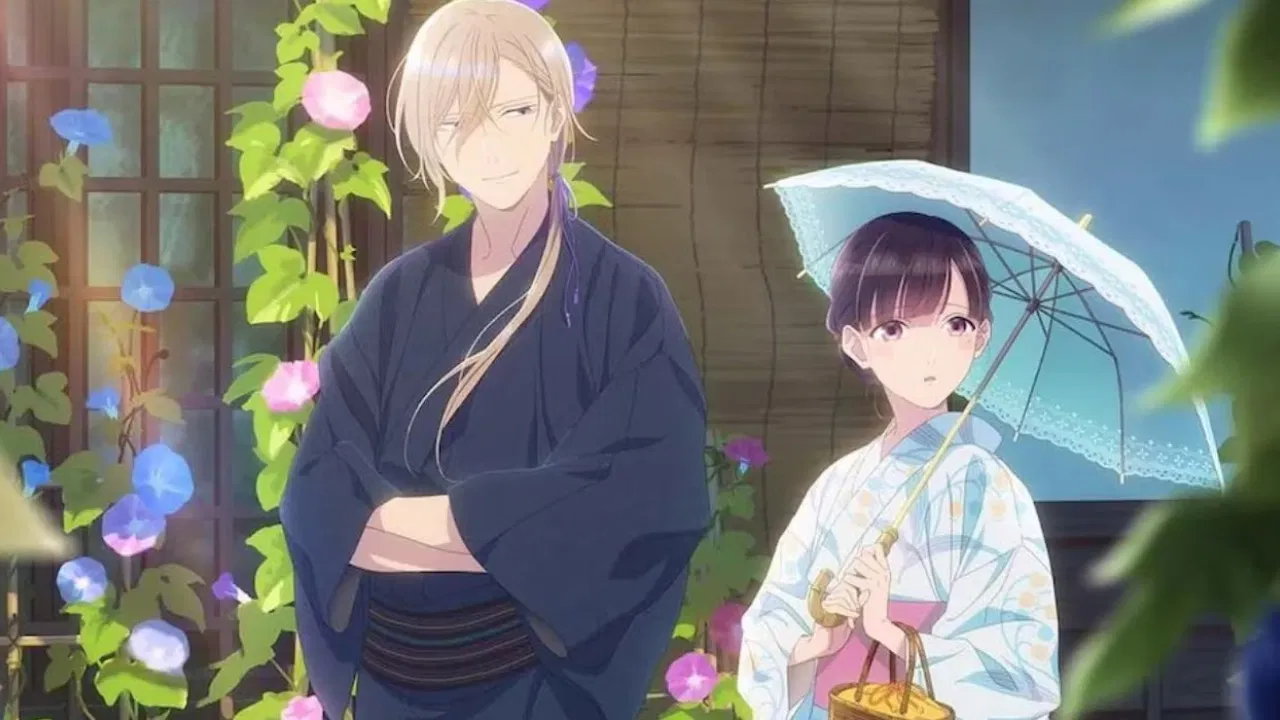
Voice acting is another standout aspect of My Happy Marriage. Reina Ueda’s portrayal of Miyo captures the character’s quiet sadness and gradual emotional awakening with subtle changes in tone and delivery.
Kaito Ishikawa’s performance as Kiyoka balances his character’s initial coldness with growing warmth and tenderness. The supporting cast, including Ayane Sakura as Kaya Saimori and Hiro Shimono as Koji Tatsuishi, bring depth to the family dynamics and secondary relationships, adding complexity to the overall narrative.
My Happy Marriage explores deeper themes beyond romance, including trauma, self-worth, and healing. Miyo’s journey from a neglected and emotionally broken girl to someone who finds strength in love and acceptance is handled with care and sensitivity.
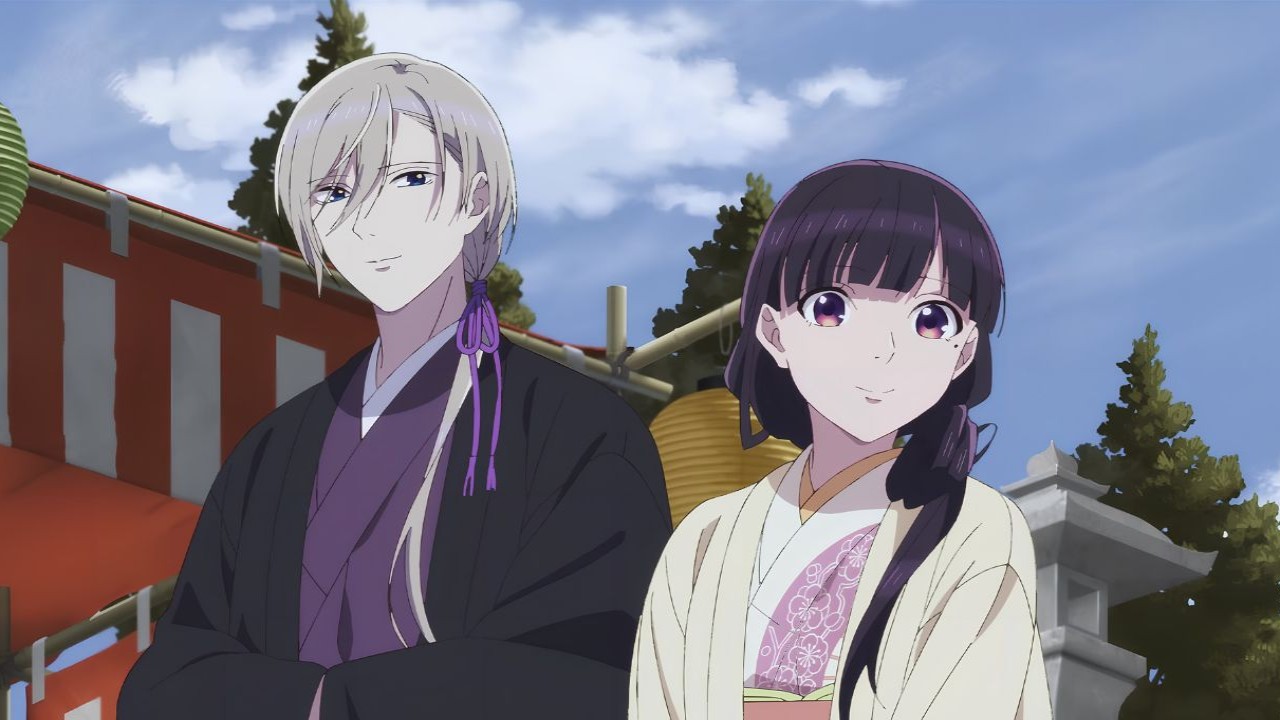
The story highlights the long-lasting effects of emotional abuse and the importance of patience and understanding in overcoming them. Kiyoka’s ability to see Miyo’s inner strength and treat her with kindness contrasts sharply with her family’s harsh treatment, reinforcing the transformative power of genuine love and acceptance.
The supernatural element adds an intriguing layer to the story. In this world, certain families possess special abilities passed down through bloodlines. Miyo’s lack of power initially defines her as inferior, but her emotional strength and resilience become her greatest assets.
Kiyoka’s powerful abilities and his position in the military contrast with Miyo’s quiet presence, but their differences strengthen their bond rather than creating a divide. This dynamic emphasizes the idea that emotional connection and mutual support are more valuable than superficial strength or status.
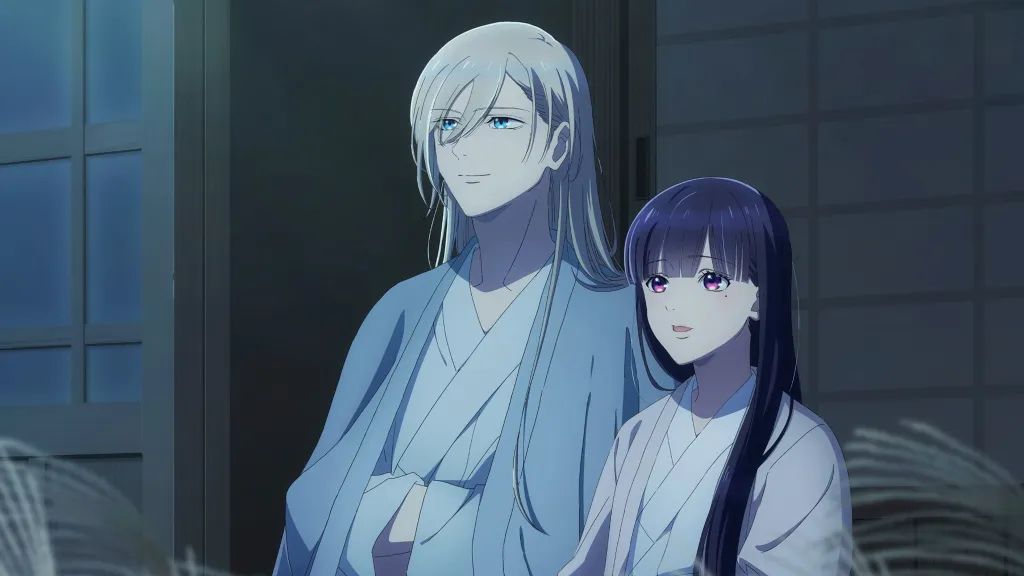
Character development is a central strength of the anime. Miyo evolves from a fragile and fearful girl into a more confident and self-assured person, largely due to Kiyoka’s steady support and belief in her. Kiyoka’s transformation is equally compelling;
His initial guarded nature softens as he learns to express his feelings more openly. The growth of trust and affection between them feels authentic and natural, making their relationship deeply satisfying to watch unfold.
While the pacing of My Happy Marriage is deliberate, it suits the story’s tone and emotional focus. The gradual development allows the characters’ emotional journeys to feel genuine rather than forced. Some viewers may find the early episodes slow, but the payoff in emotional depth and character growth justifies the steady progression.
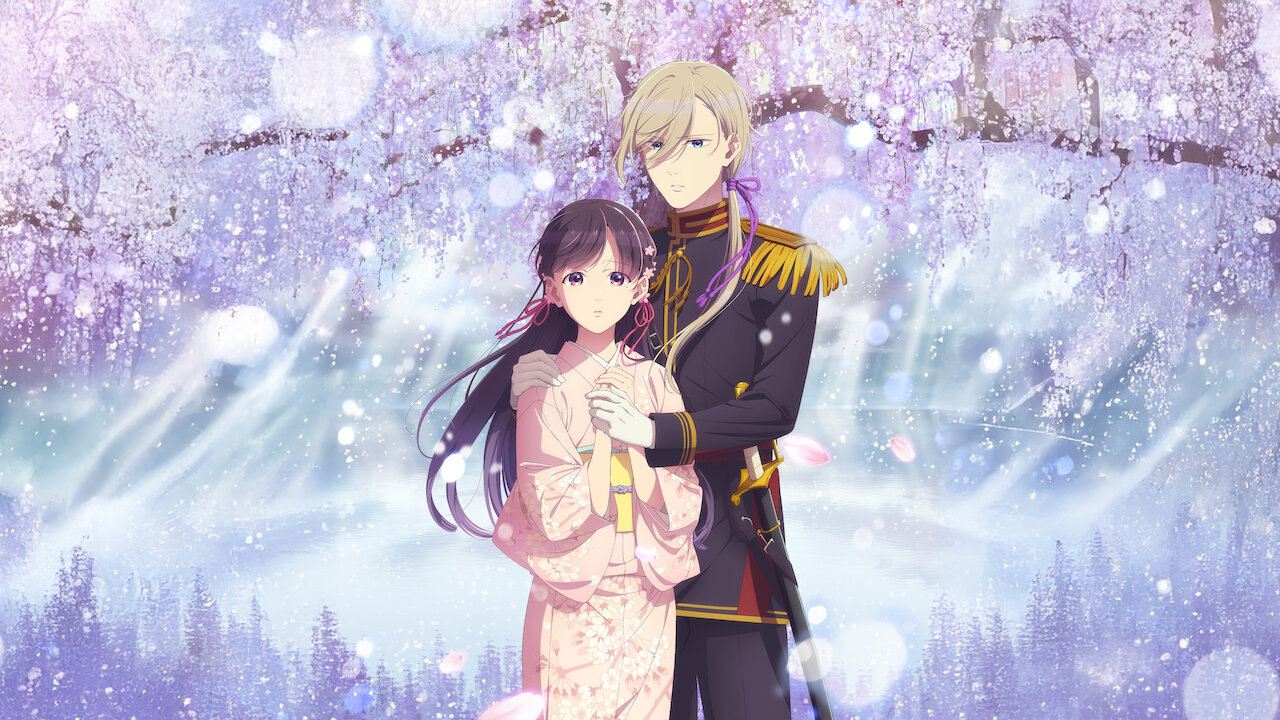
The series balances romance and drama without leaning too heavily on either, maintaining a consistent emotional tone throughout.
My Happy Marriage stands out among romance anime for its thoughtful storytelling, emotionally nuanced characters, and beautiful production quality. Its exploration of trauma, healing, and love resonates on a deeper level, making it more than just a simple romance.
The care and sensitivity in depicting Miyo’s journey from rejection to acceptance give the story lasting emotional impact. Combined with its elegant animation, evocative soundtrack, and strong performances, My Happy Marriage leaves a lasting impression as a heartfelt and beautifully crafted anime.

